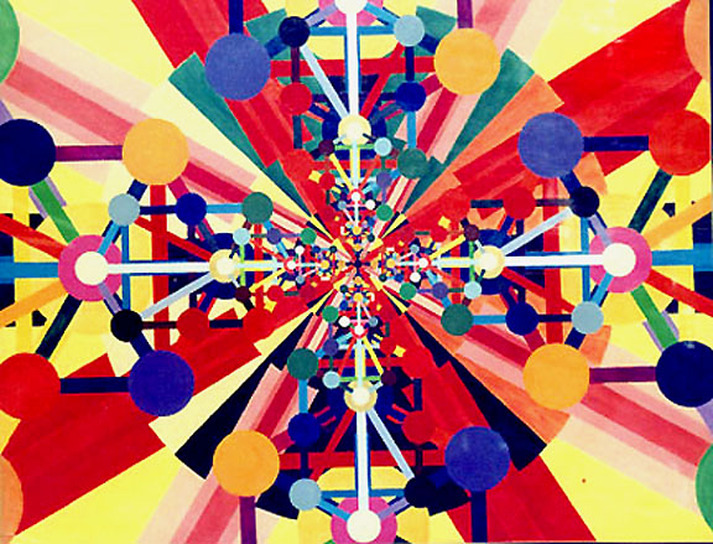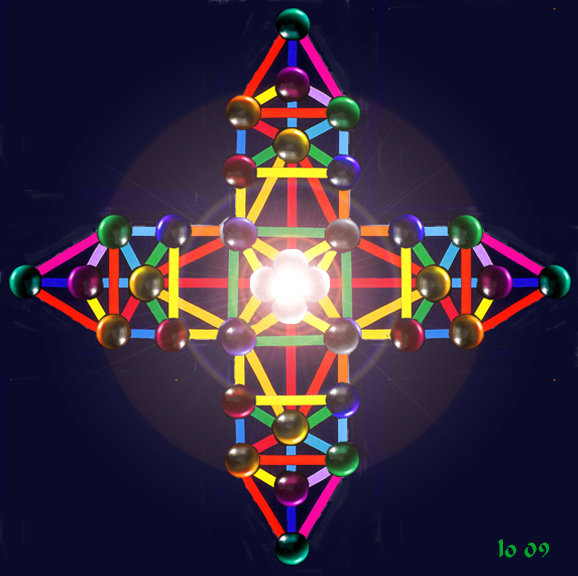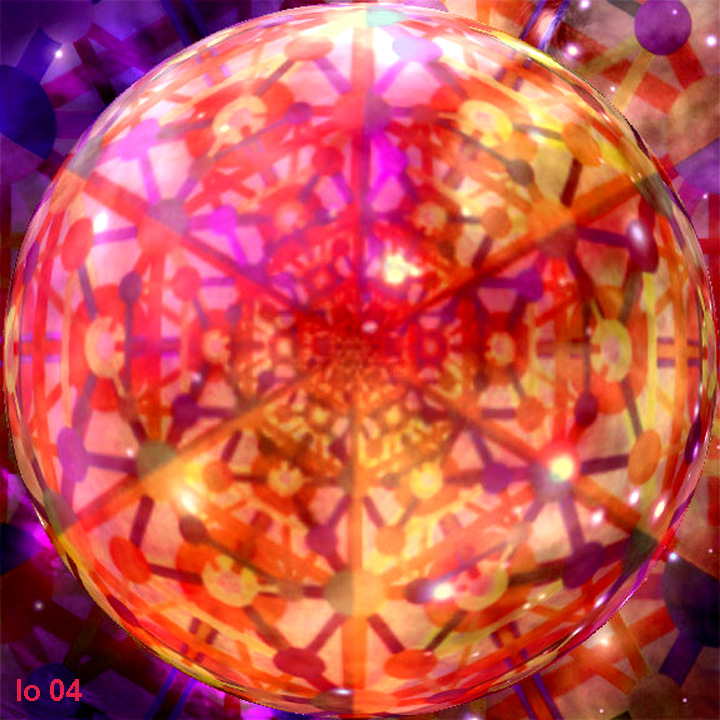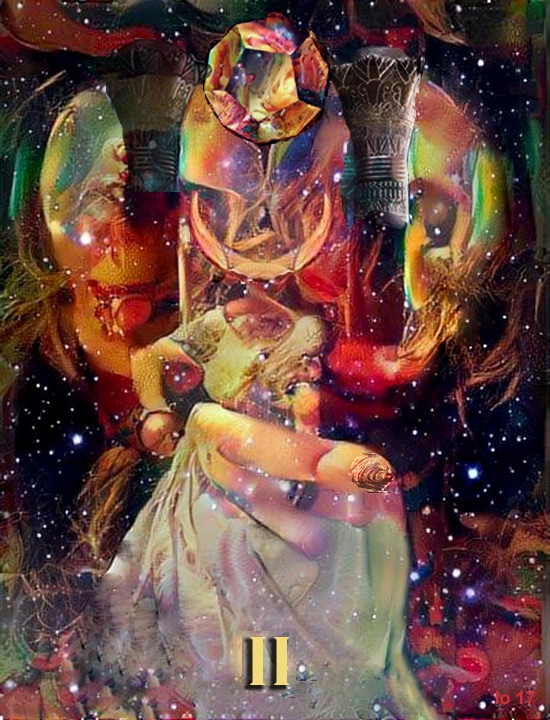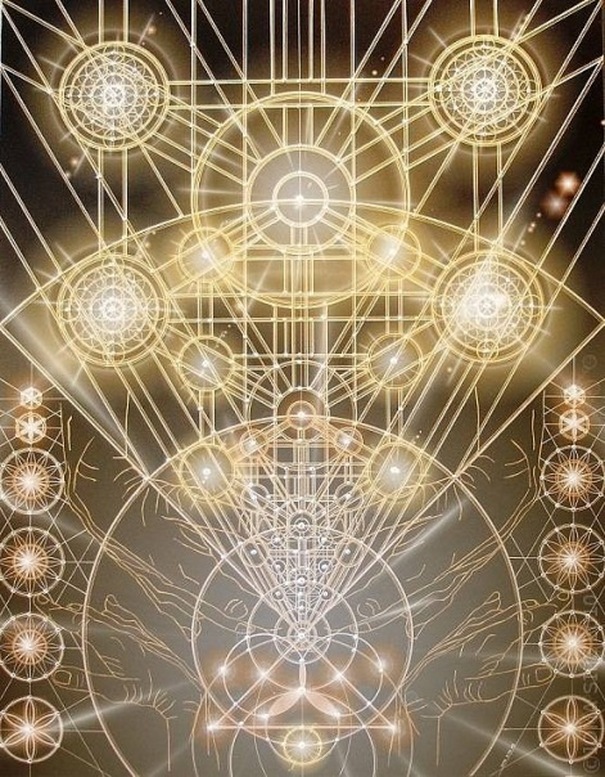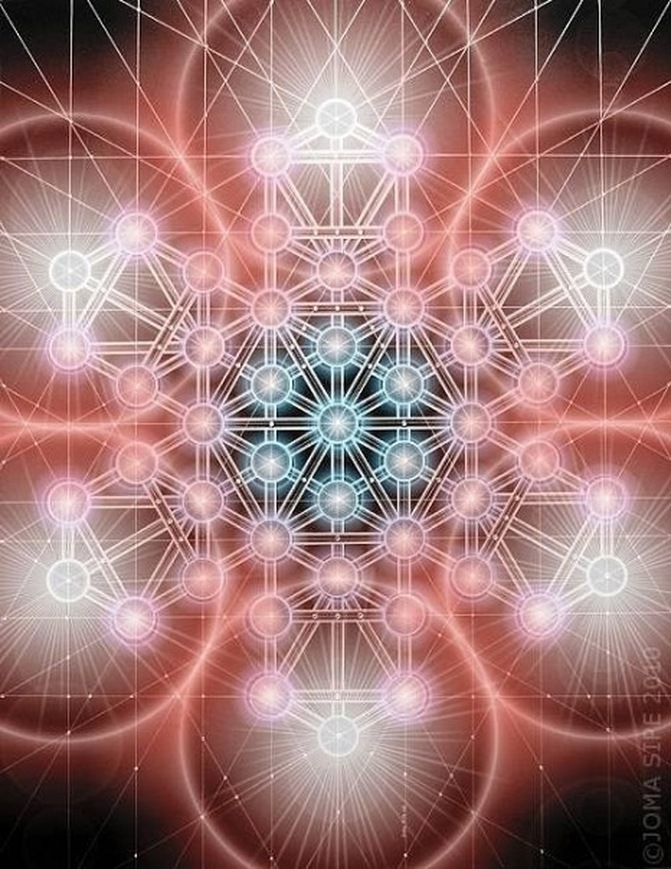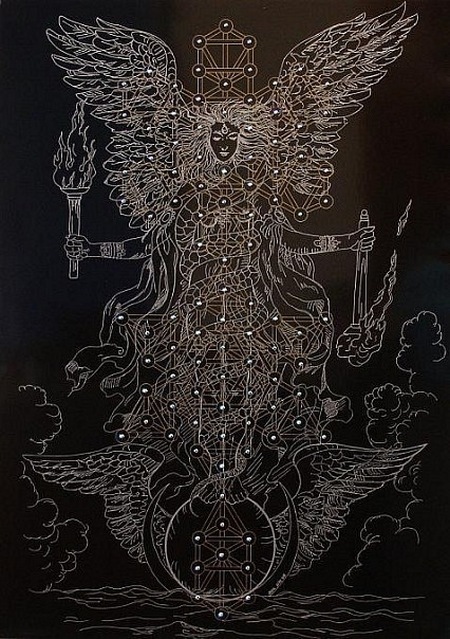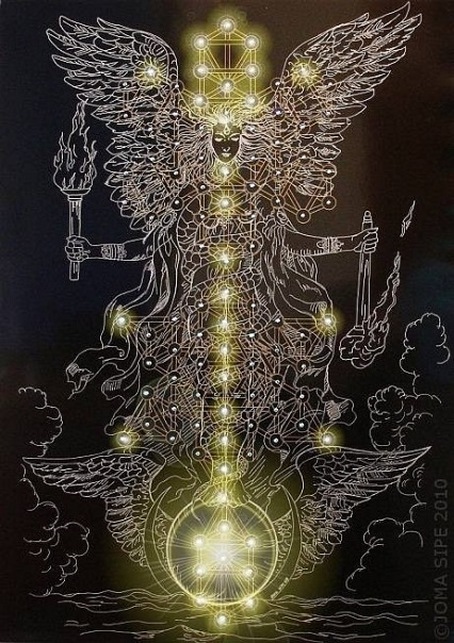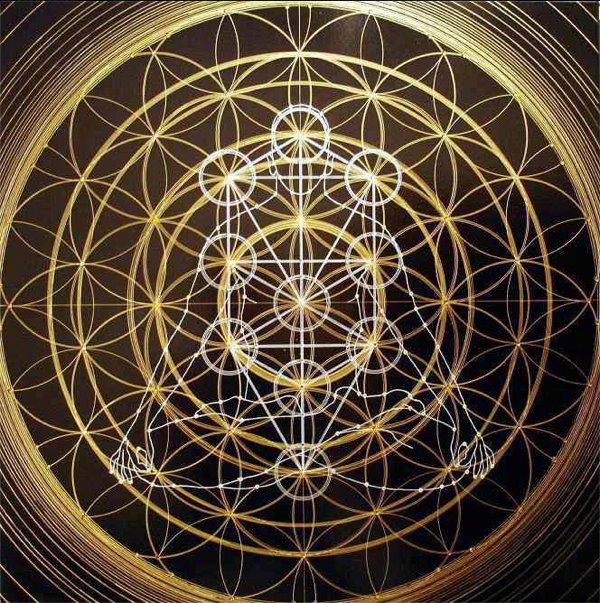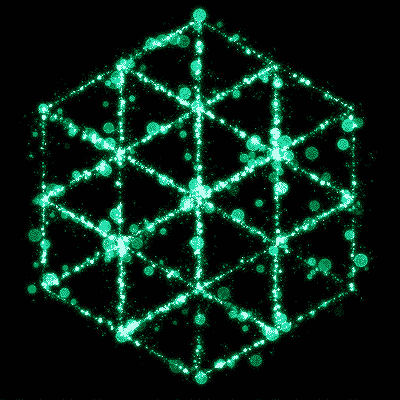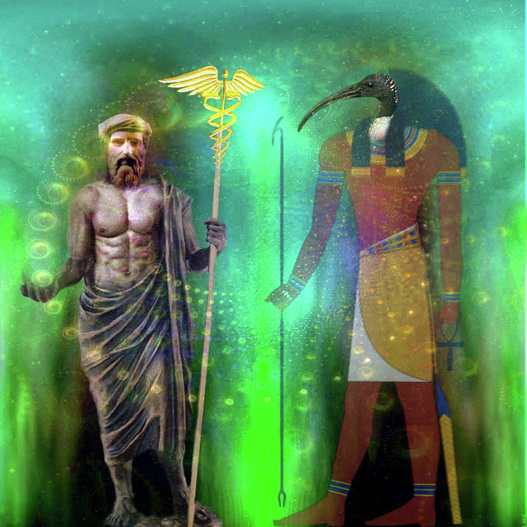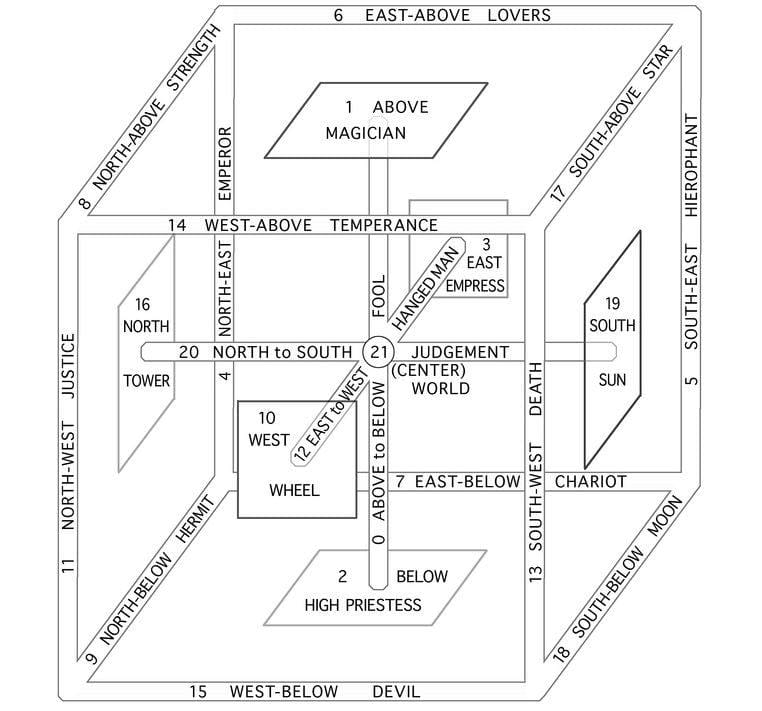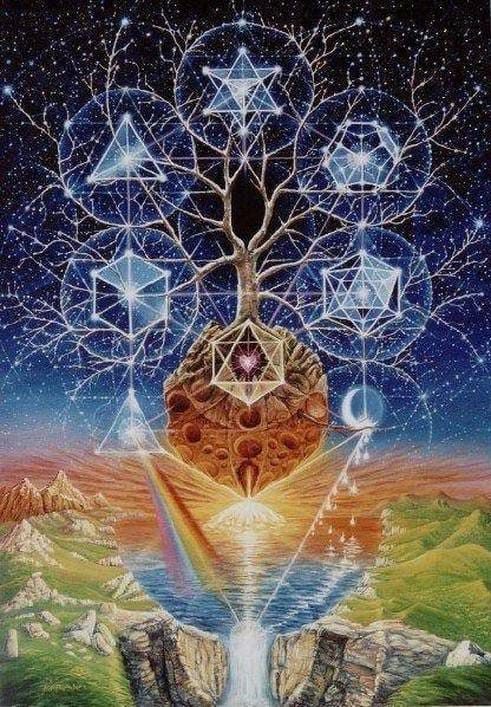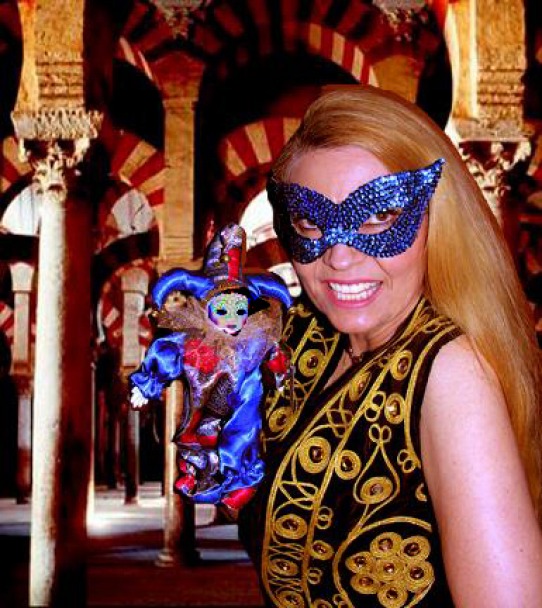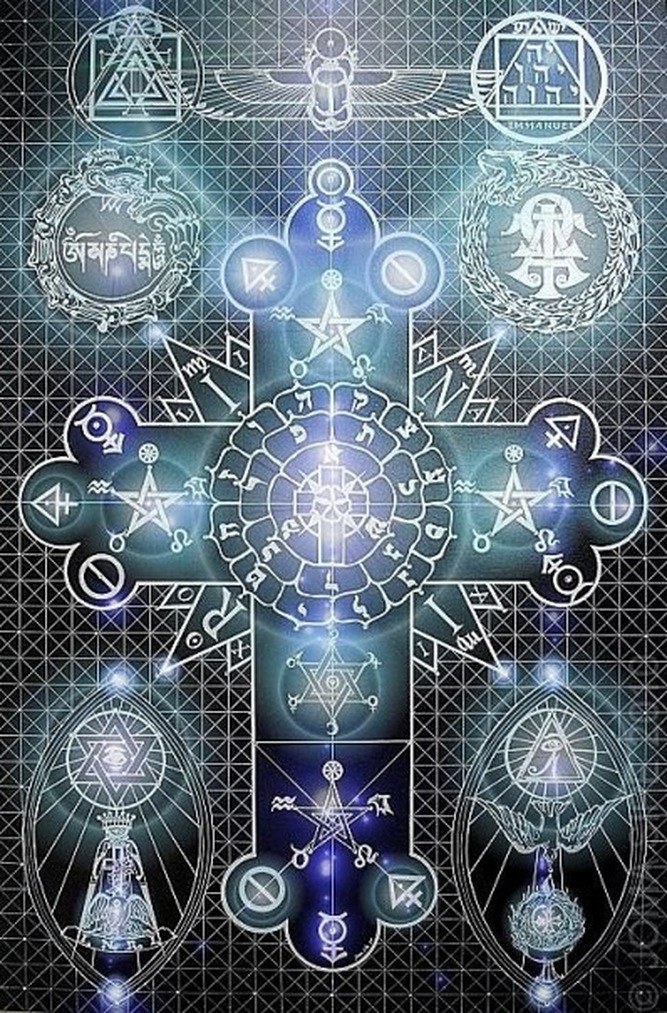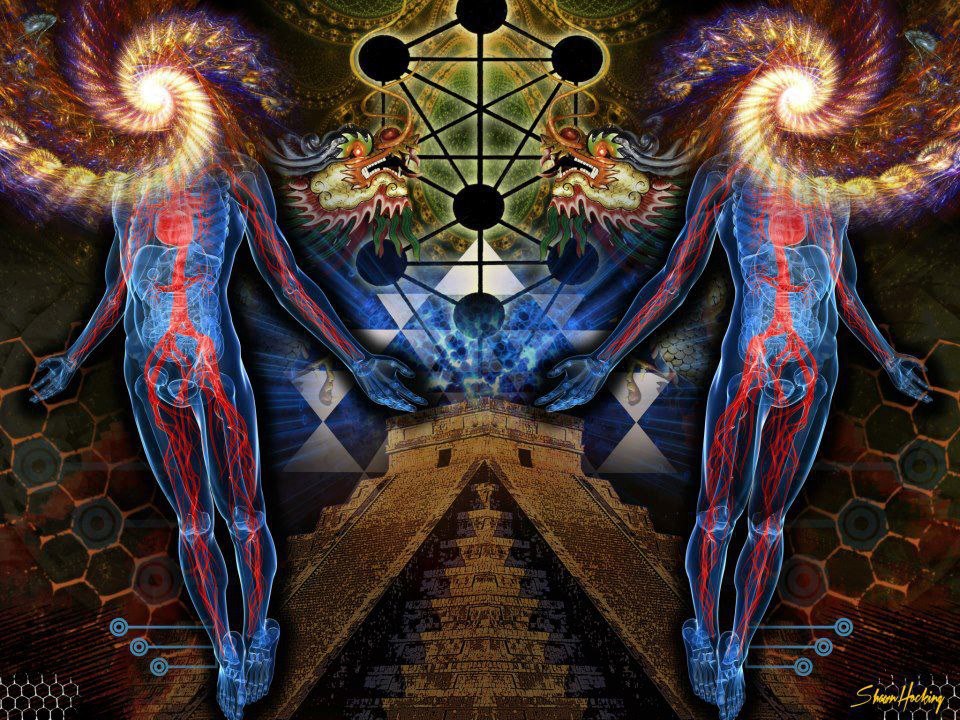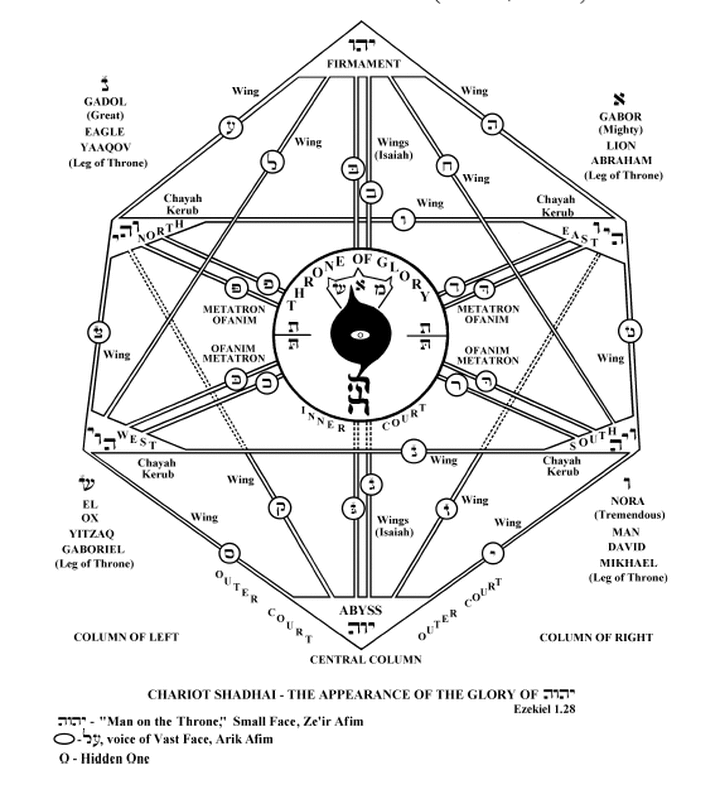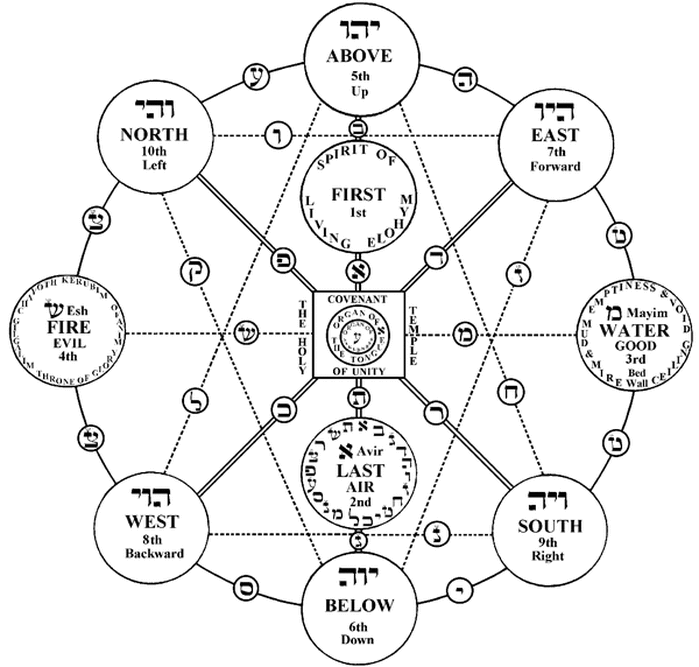Consciousness is Altered at the Altar
SYNERGETIC QABALA
THE TREE OF LIFE & DEPTH PSYCHOLOGY
Visit Site Here: http://zero-point.tripod.com/
Macrocosmic Snowflake, Joma Sype
Iona Miller, (c)1993
Iona Miller, Qabalistic Cross, (c)1974, Acrylic, 40x60
High Priestess, Iona Miller, 2017
Tree of Life, Joma Sype
O REFLEXO DO AMOR l LOVE´S REFLEX (Illuminated Version) - www.jomasipe.com
Joma Sipe
http://zero-point.tripod.com/
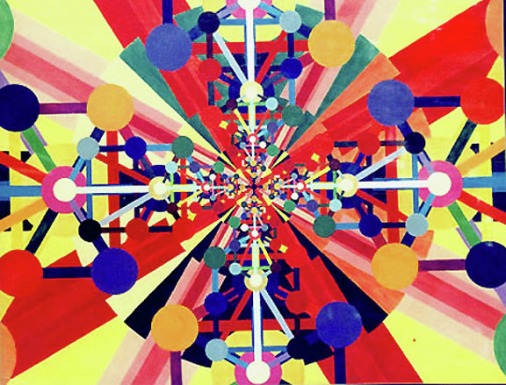
MEDITATIONS
ON SACRED GEOMETRY
THE HOLOGRAPHIC TREE
New Science and the Tree of Life
by Iona Miller, 1993 ABSTRACT: The science of wholeness emerging from interdisciplinary approaches to the nature of reality reflects many Qabalistic principles. Among the theories expressing this new paradigm are quantum mechanics, chaos theory, Bohm's holographic universe, Pribram's holographic brain, Buckminster Fuller's synergetics, Sheldrake's morphogenetic fields, co-evolution, the Gaia and Panspermia hypotheses, semiotics, hermeneutics, hyperdimensional realities, the new cosmology and consciousness studies.In new sciences, consciousness and matter share the same essence as different expressions of the same reality.
New sciences describe the evolution of the laws of nature, the evolution of our perception of nature. In this view there are no absolutes, no fixed laws of nature, only a relative stability. The laws of nature are evolving because nature is creative.This universal dynamic creativity is also the domain of the Qabala with its consciousness map, the Tree of Life. It presents a holistic image of emergent creativity, a webwork of the interaction of various spheres of influence, and the complex feedback loops which bind them to one another. In terms of consciousness, each sphere (hypersphere) represents a discrete state of consciousness, and each path a transitional phase, or transformation. Aspects of the system can be entrained through resonance.
Every body placed in the luminous air spreads out in circles and fills the surrounding space within infinite likenesses of itself and appears all in all. --Leonardo da Vinci
Our mapmaking changes the very terrain, and terrain in turn changes our map. Maps, mapmakers, and terrains whirl around each other like the vortex in a river which expresses the whole. --Briggs and Peat, Looking Glass Universe
A WHOLE -- IF NOT ABSOLUTE -- TRUTH
Wholeness has traditionally been a mystical perspective. Now, the new sciences with radical notions of nonlinear complex dynamics, nonlocality, chaotic behavior, patterns of energy flow, relativity, enmeshment, fuzzy logic, etc. are revealing a deeper order underlying the nature of our directly experienced reality.Wholeness is characterized by "flow," and the influence of every event on every other. Through minute fluctuation, this flow gives birth to sudden orders of all kinds--structures of flowing energy exchange.
The whole is contained, paradoxically, within the "part," holographically. Yet, wholeness can include incompleteness, the higher degree of order always hidden in apparent randomness.Analogous processes of transformation in consciousness lead to insight and creativity. Each moment in the therapeutic process, as in all life, reflects all others in the past. Each therapeutic image contains a fractal-like representation of past, present, and future. The transformation of imagery reflects in creativity; transformation of beliefs, thoughts, feelings, values, attitudes and behavior.
The Tree of Life encodes a dynamic system of transformation of the individual at the physical, emotional, conceptual, and spiritual levels. Rather than a hierarchical "ladder" to be climbed, the Tree is a stratified image of the holistic nature of existence which interpenetrates as a fluid exchange of energy at every level. More subtle "planes" are simply more deeply enfolded aspects of reality--hidden domains of order creating variables in our ordinary existence.
More than the sum of its parts, the Tree represents a multidimensional web of processes emanating in all directions by the conjoint macro-micro co-evolution of all systems. This web exalts the pure intensification of life.
The secret of the universe is that it is alive.The qabalistic Tree presents a model of reality and consciousness which is organic in nature. It reflects the nature of nature, the nature of mind, and relevates the nature mind (natural mind) -- void of conceptualization -- the Clear Light. Qabala offers an animated alternative perspective to the mechanistic, cybernetic models of psychoneurological function.The living Tree models co-evolution as a creation that is happening at every point everywhere, in a fractal-like bottomless unfolding. It also accommodates the self-referential process of recursive feeding back (or recycling) of consciousness in psychological transformation -- modeling the penetration of awareness into deeply implicate realms.
Pathworking provides for the opening, amplification, and exploration of specific feedback channels, and the induction of specific altered states of consciousness.The Tree is a graphic representation of the dynamic process of becoming. There is no real hierarchy, no fundamental level of description. Rather, there are different levels, each dependent on the others in complex ways. Higher levels feed back strands of information to lower levels, back to new higher levels, and so on. Rather than describing a world of things, it describes process structures and emphasizes relationship. It describes hidden formative principles, and a webwork of multiple perspectives.
Modern cosmology suggests that all matter plus all gravity in the observable universe equals zero. So the universe -- and therefore, ourselves -- could come from nothing, because it is fundamentally nothing. This echoes the qabalistic creation myth where all substance emanates from the primordial Veils of Negative Existence. It reminds us of the Vedic and Buddhist notions that we and all we can observe are no more than 'mind-stuff.' It reminds of Jung's conclusion that at the most fundamental levels psyche and matter are the same, that psyche and soma are indissoluably welded in our psychophysical selves.
The story goes that around 4,000 years ago an angel of God gave the Qabala and Tree of Life to Abraham. Though the glyph has gone through a few permutations through the centuries, it's essence has remained intact. Curiously, this matrix describes the exact geometries of the nucelus of atomic structure as described by Buckminster Fuller in Synergetics. By "looking within" the qabalists correctly deduced the primal structure of reality without any recourse to modern science and technology. Apparently, the angels spoke the Truth. This is the essence of Synergetic Qabala.
ON SACRED GEOMETRY
THE HOLOGRAPHIC TREE
New Science and the Tree of Life
by Iona Miller, 1993 ABSTRACT: The science of wholeness emerging from interdisciplinary approaches to the nature of reality reflects many Qabalistic principles. Among the theories expressing this new paradigm are quantum mechanics, chaos theory, Bohm's holographic universe, Pribram's holographic brain, Buckminster Fuller's synergetics, Sheldrake's morphogenetic fields, co-evolution, the Gaia and Panspermia hypotheses, semiotics, hermeneutics, hyperdimensional realities, the new cosmology and consciousness studies.In new sciences, consciousness and matter share the same essence as different expressions of the same reality.
New sciences describe the evolution of the laws of nature, the evolution of our perception of nature. In this view there are no absolutes, no fixed laws of nature, only a relative stability. The laws of nature are evolving because nature is creative.This universal dynamic creativity is also the domain of the Qabala with its consciousness map, the Tree of Life. It presents a holistic image of emergent creativity, a webwork of the interaction of various spheres of influence, and the complex feedback loops which bind them to one another. In terms of consciousness, each sphere (hypersphere) represents a discrete state of consciousness, and each path a transitional phase, or transformation. Aspects of the system can be entrained through resonance.
Every body placed in the luminous air spreads out in circles and fills the surrounding space within infinite likenesses of itself and appears all in all. --Leonardo da Vinci
Our mapmaking changes the very terrain, and terrain in turn changes our map. Maps, mapmakers, and terrains whirl around each other like the vortex in a river which expresses the whole. --Briggs and Peat, Looking Glass Universe
A WHOLE -- IF NOT ABSOLUTE -- TRUTH
Wholeness has traditionally been a mystical perspective. Now, the new sciences with radical notions of nonlinear complex dynamics, nonlocality, chaotic behavior, patterns of energy flow, relativity, enmeshment, fuzzy logic, etc. are revealing a deeper order underlying the nature of our directly experienced reality.Wholeness is characterized by "flow," and the influence of every event on every other. Through minute fluctuation, this flow gives birth to sudden orders of all kinds--structures of flowing energy exchange.
The whole is contained, paradoxically, within the "part," holographically. Yet, wholeness can include incompleteness, the higher degree of order always hidden in apparent randomness.Analogous processes of transformation in consciousness lead to insight and creativity. Each moment in the therapeutic process, as in all life, reflects all others in the past. Each therapeutic image contains a fractal-like representation of past, present, and future. The transformation of imagery reflects in creativity; transformation of beliefs, thoughts, feelings, values, attitudes and behavior.
The Tree of Life encodes a dynamic system of transformation of the individual at the physical, emotional, conceptual, and spiritual levels. Rather than a hierarchical "ladder" to be climbed, the Tree is a stratified image of the holistic nature of existence which interpenetrates as a fluid exchange of energy at every level. More subtle "planes" are simply more deeply enfolded aspects of reality--hidden domains of order creating variables in our ordinary existence.
More than the sum of its parts, the Tree represents a multidimensional web of processes emanating in all directions by the conjoint macro-micro co-evolution of all systems. This web exalts the pure intensification of life.
The secret of the universe is that it is alive.The qabalistic Tree presents a model of reality and consciousness which is organic in nature. It reflects the nature of nature, the nature of mind, and relevates the nature mind (natural mind) -- void of conceptualization -- the Clear Light. Qabala offers an animated alternative perspective to the mechanistic, cybernetic models of psychoneurological function.The living Tree models co-evolution as a creation that is happening at every point everywhere, in a fractal-like bottomless unfolding. It also accommodates the self-referential process of recursive feeding back (or recycling) of consciousness in psychological transformation -- modeling the penetration of awareness into deeply implicate realms.
Pathworking provides for the opening, amplification, and exploration of specific feedback channels, and the induction of specific altered states of consciousness.The Tree is a graphic representation of the dynamic process of becoming. There is no real hierarchy, no fundamental level of description. Rather, there are different levels, each dependent on the others in complex ways. Higher levels feed back strands of information to lower levels, back to new higher levels, and so on. Rather than describing a world of things, it describes process structures and emphasizes relationship. It describes hidden formative principles, and a webwork of multiple perspectives.
Modern cosmology suggests that all matter plus all gravity in the observable universe equals zero. So the universe -- and therefore, ourselves -- could come from nothing, because it is fundamentally nothing. This echoes the qabalistic creation myth where all substance emanates from the primordial Veils of Negative Existence. It reminds us of the Vedic and Buddhist notions that we and all we can observe are no more than 'mind-stuff.' It reminds of Jung's conclusion that at the most fundamental levels psyche and matter are the same, that psyche and soma are indissoluably welded in our psychophysical selves.
The story goes that around 4,000 years ago an angel of God gave the Qabala and Tree of Life to Abraham. Though the glyph has gone through a few permutations through the centuries, it's essence has remained intact. Curiously, this matrix describes the exact geometries of the nucelus of atomic structure as described by Buckminster Fuller in Synergetics. By "looking within" the qabalists correctly deduced the primal structure of reality without any recourse to modern science and technology. Apparently, the angels spoke the Truth. This is the essence of Synergetic Qabala.
QABALA AS A SPIRITUAL PATH, Iona Miller, c1987

Art: Dark Angels Tapestry, Iona Miller, (c)2004
I inquire, I do not assert;
I do not here determine anything with final assurance;
I conjecture, try, compare, attempt, ask...
Statement of Purpose: The orientation of the Synergetic Qabala sites is to provide serious qabalists with modern conjectures in Theoretical Qabala with the aim of contemporizing our models and practices. The emphasis here is on mysticism and meditation, rather than ritual and magick. These essays, artwork, and visualizations are not meant as a new dogma, practice, or school of thought. They are simply the result of my own thirty-plus years of qabalistic work. I hope they provide a springboard for your own thought. They are meant to stimulate and provoke your own speculations, insights, and experiments. Qabala is not a static doctrine, but a living Way. Qabala is an experiential path, an experiment which lasts throughout one's life. Qabala is ultimately about access to and experience of discrete states of consciousness, ways of being and becoming. To glean its wisdom, we must "sample the dish," not simply read the recipes. It is a subject which cannot be exhausted. We must make it our own, even while honoring its tradition. In this way, we have the best of both worlds. Qabalistic traditions and models are validated by modern research everyday. It has a vast capacity to incorporate the entire repertoire of human knowledge and understanding, coordinating through its primary glyph, the Tree of Life.
We can update our models and create revolutions in our own beliefs and thinking, much the same as happens in science. Therefore, we will be drawing on resources from post quantum physics, Jungian and Transpersonal Psychology, and traditional and modern philosophical speculation, such as Buckminster Fuller's Synergetics. I hope you find valuable concepts here for bootstrapping into your own worldview and facilitating your journey toward Union.
"Ever since the Lord ordained the Creation,
I have been pledged to return to my original home.
People know, from my quest for unity in God,
that I am as anxious as I am eager to merge with him.
I shall bear the blows of destiny as I pursue him,
while I am ferried across to him on the boat of his love.
No one ever found the Lord while living,
O Bahu, except those who found him by dying while living."
-Sultan Bahu, 17th Century Sufi saint, Punjab, India
THE SYNERGETIC QABALA
The premise of Synergetic Qabala is based on the fact that manifesting form is essentially energetic. Form is not other than force, and force is often indistinguishable from form. Forces interacting in dynamic stabilization are essentially, therefore, synergetic. The right and left Pillars of the Tree of Life are in a state of dynamic tension, as well as other polarities which it embodies.
While Synergetic Qabala is essentially a geometrical philosophy, it is not a sterile number mysticism, but a theosophical approach to the unfathomable mysteries of Qabala and its essentially mystical orientation. The Tree of Life is a model of the universe that describes energy's behavior and also has the ability to shape our thinking.
Synergetics describes the actual underlying geometry of subatomic structure. Here we employ nature's own coordinate system, the geometry nature uses for self-organization --the tetrahedron. There is a relationship between geometry and number which is intrinsic to the spheres and geometry of the Tree of Life. It defines the philosophical universe of Qabala. Explorations in this geometry are covered elsewhere in"The Synergetic Qabala."
The ancient system of the Qabala may best be described as a mystical theosophy, an effective guide for understanding ourselves and our relationship to the universe. It provides a cohesive worldview which is consistent with the findings of modern physics, psychology, and philosophical thought. It provides not only a philosophy, but a Way of life. It is a mystical discipline which requires an active spiritual practice for realization.
As in the case of physics, there are two main branches of Qabala. The first is speculative or Theoretical Qabala and the second is Practical Qabala which concerns the application of its principles through theurgic magic and/or mystical meditation. It is a complex system of symbols and principles for developing the inner potential of human nature, leading to the stage of conscious service to the divine powers at the source of all creation. Though often spelled many ways, we employ the simplest transliteration of QBL, as Qabala (ka-ba-la).
Though associated with the Hebrew, and later Hermetic philosophers, the roots of Qabala possibly originated in Egypt. The Western occult tradition attributes it to Hermes Trismegistus, or Thoth (Egyptian inventor of writing, astronomy, and mathematics). These teachings belong to ancient Egyptian mystery traditions that predate Plato and the Bible, with treatises on ancient cosmology and sacred psychology.
The Hermetic tradition enjoyed a revival when Marsilio Ficinio translated a bundle of ancient Egyptian manuscripts with the collective name of the Hermetica (1463). The Hermetica has been called the fountainhead of Western spirituality, the motherlode of all later esoteric and metaphysical systems. Here we find the suggestion that mankind is a hybrid of human and divine elements. Human nature is potential divinity, or "Godseed." Hermetics opened the way to independent spiritual seeking--spontaneous God contact--in the West. It suggests the possibility of transhumanization, and the divine mission of cocreation.
Egyptian religion is the prototype and source of mankind's interest in seeking immortality. It is the source of mystical teachings on reincarnation, magic, healing, the mysteries and the rudiments of sciences such as astronomy and chemistry. The other primary source of mythic material comes from Sumeria with its stories of God-men, the Great Flood, the creation of Adam, and the nature of deep time (Enuma Elish) and the Cosmos. They developed a rich culture, including the first recorded kingship, libraries, and systems of measurement, and sacred geometry. The Zodiac developed from Mesopotamian astronomy.
Early Jewish initiates believed Qabala's mysteries were first taught by God to a school of angels. According to legend, the angels in turn transmitted it to Adam after the Fall in an attempt to help humanity regain its balance. These mythic images suggest a Mesopotamian origin for these doctrines which is lost in the mists of prehistory. Remember, the Hebrew patriarch Abraham began his spiritual journey away from paganism toward monotheism in the Mesopotamian city of Ur, (in the heart of the ancient Sumeria, where recorded history, culture, and modern technology began).
We can use the Qabala today as a guide for our personal growth, both psychological and spiritual. Qabala helps us get in conscious contact with latent or hidden aspects of our deep mind, collective inheritance, and Source. The imagery and phenomenology of Qabala is well documented. The universe is an emanation or flowing forth of Godhead, the primal Source It is an expression of the dynamic fullness of divine Life.
This plenum or matrix is the source of divine aparks who plunge into the long process of involution or descent through the planes into manifestion. They eventually undergo an evolution in which new and infintely differentiated aspects of the original, unmanifest potentiality of the Godhead comes to expression. Ascent up the central column of the Tree of Life is the mystic's path to spiritual awakening and absorption. The Source can be experienced directly and discovered within us. This universal paradigm correlates with all mystical traditions. It is the very ground of our self-awareness.
The qabalistic Universe is a spatially conceived cosmos divided into higher and lower worlds or heavenly spheres of influence. Qabala is about the relationship of the One to the Many, and the Many to the One; all are conceived as active aspects of Living Deity and their dynamic interrelations. It describes a vast panoply of involution and evolution. It is an immense network of embedded symbolism and arcane lore, which begins with a cosmology, (a scenario about how the universe and humanity came into being; the patterns of nature in relation to the moral and psychological aspects of human behavior).
The qabalistic Genesis begins with the emanation of Ain Soph, "supreme wisdom," the Godhead as pure light-filled creative intelligence, source of all manifestation. The Limitless Light flows out into the 10 Spheres of the Tree of Life down through the Four Worlds of Creation: Archetypal (divine), Causal (mental), Astral (emotional), and Physical. Emanation means that God sent forth a portion of his own essence into the manifestation, rather than creating a separate reality. This cosmic pattern or design reflects the divine order, the pervasive design of the world.
The succession of numbers 1 through 10 symbolizes and is, in fact, identical with the emanation of the manifest Universe. The 22 letters of the Hebrew alphabet contain and create the secret structure of all things. The cosmic process is an unfolding of the mystical name of God. Each letter corresponds with a path on the Tree of Life, and functions as a mystical "gateway" to its experience.
Though originally an oral tradition, written philosophical doctrines can be traced to the 3rd through 13th centuries. The foundational text of written Qabala, the Sephir Yetzirah, 'The Book of Formation' is based on alphanumeric mysticism. It describes how God created the manifest universe by means of letter/numbers which are the foundation of all things. The letters are part of 'one body,' the alphabet which is an extention of God's own being.
All created things, made by means of the letters, are also parts of the one body which is God. Contemplation of and meditation on these Hebrew letter/numbers is fundamental to accessing discrete mystical states. Mystical understanding of this divine Unity is the first concern of qabalism. This is part of the origin of the power of the Word or Logos in the crossroads cultures of the Middle East. In ancient Egypt the specific organ of creation was Ptah's mouth, "which named all things."
Like the descending emanations from the divine source, the soul leaves its home in Godhead and descends into physical form, where its redemption comes through seeking that from which it originated. Thus, Qabala is a Path of Return to the pristine state, but with an experiential legacy.
This legacy comes from "dying while living," a metaphor for the daily "death" to the outer world in mystical meditation. Ultimately Qabala is a solitary pursuit, but one best conducted with an experienced guide. Remember, no teacher can take you any further than they have been, and there are real psychological and spiritual dangers in the realm of the collective unconscious.
Not everyone is naturally equipped to discriminate subtle tricks of the mind (mental imbalance, hallucinations, delusions, ego inflations, flights of fancy) from authentic spiritual insight. True mystical experience, like scientifically conducted experiments, is repeatable and reproducable. It is approximately the same for all practitioners, everywhere, in all times.
The same is not true for what psychologists call "magical thinking," which is a pre-rational, rather than transrational state, characterized by a plethora of superstitions and often paranoid ideations. Much of so-called New Age thought is characterized by these romanticized superstitions and faulty conclusions based on sporadic results from unsystematic, idiosyncratic rites and practices.
We may be well-intentioned when we embark on self-directed studies, but this method can take you no further than the Self, where many magicians make the mistake of setting themselves up as an ersatz God and worshipping their own willfullness. Is not setting oneself up as one's own God the ultimate folly, and the mistake which turns the adept into a Black Magician, deifying his own personality?
We must abandon our narcissism to take up the quest for archetypal origin. It involves personal sacrifice and ordeals. Four factors show the difference between someone who has creative fantasies and someone who is only spinning neurotic nonsense: originality, consistency, intensity, and subtlety.
Though the roots of magic and schizophrenic fantasy spring fom the same source, they are not synonymous. Magic is a counterphobic attitude, the transition from passivity to activity. In fantasy, realistic action does not follow; it is a substitute for healthy, pro-active behavior. The ego is weak or totally absent, engaging in fruitless attempts at restitution.
True aspirants show continuity of devotion to God, not self-aggradizment. One learns how to navigate in the imaginal realm--an as if reality--without taking it literally. We learn to become absorbed in the Divine without mistaking our spiritual awakening for de facto personal deification. The attitude is one of "Not my will but Thine be done." It is the spirit of submission and selfless service to the Divine Will.
Reports of angels and demons are commonplace in Qabalistic literature. Once again, this speaks of a Mesopotamian origin or subsequent influence. The crossroads cultures of the Mediterranean and Middle East influenced one another's philosophies.
In late antiquity there was a mingling of Gnostic, Neoplatonic, the ancient Hebrew Merkabah tradition, and magical speculation with Babylonian notions of angelic, demonic, and divine powers. This influenced the development of mystical lore. This co-mingling (syncretism) had long been established by the time the central text of Qabalism, the Zohar was written in 13th century Spain.
In terms of Jungian psychology, the angels seem to correspond with inner guides or wisdom figures, while the demons are analogous to psychological complexes. Qabalistic speculation asserts that angelic guardians and demons can block one's progress to ascent. In many ways these "entities from other dimensions" represent different aspects of the human psyche--forms of our higher and lower selves.
Psychologically, we know that imbalance and neurosis are blocks to our growth, self-defeating behaviors. Angels can be seen as transpersonal resources, while demons manifest within us as autonomous subpersonalities with their own agenda, not necessarily in synch with our personalities goals.
Somewhere in between common angels and demons comes the notion of the daemon, genius, or Holy Guardian Angel--a personal inner guide which appears as synchronicities, inspiration, creativity, intuitive knowing, or directly as a personified figure for dialogical exchange. Angels are messengers which mediate between the divine and the human.
The angel instructs and inspires, draws forth and nurtures our talents. We connect with our personal essence and self-expression.It can be a guardian of the threshold of the mysteries, harsh taskmaster or the source of seemingly infinite creative expression. But, once summoned, it will not be ignored without peril. Attainment of "Knowledge and Conversation" with this singular Angel is the primary operation of elementary theurgic magick, and is central to further progress and transcendence.
The purpose of the Qabala (QBL) is to help us experience the Mysteries directly through personal encounter, both inwardly and outwardly. It is no mere study, but an applied philosophy. The transformative lessons of the Qabala come through life experiences and consciousness journeys. It is visceral and emotional, as well as mental. It is a perspective on life that is actively immersed in the mythic as well as personal worlds. The adept has a foot in, or walks between both worlds.
The doctrine of Qabala is based on the premise that God created mankind in his [their] own image. The Creation is attributed to the Elohim, male/female deities acting as agents of the supreme God. There is a hierarchy of hyperdimensional entities which inhabit the various subtle planes of the universe. Each of the classes of angels has a specific relationship and duties toward mankind. They are all in service to the self-revealing dynamic God of religious experience. An existing God means a manifest, revealed and related God.
The guiding axiom of the Creation is "As Above, So Below." This Hermetic axiom means that there is an archetypal identity between divinity and mankind, mankind and the Universe. This intimates that mankind can achieve a "cosmic consciousness," since "we are that." We can "receive" this knowledge or revealed Truth directly from the Source, through QBL which literally means "to receive."
There are six major principles of the Qabala:
* The cosmos is a Unity, with all aspects in interrelation. It is a wholistic worldview.
* The forces of creation represent an eternal interplay between an active force and a passive one; polarity (positive and negative charge, male/female, yin/yang, holding the tension of the opposites).
* The human individual is a microcosm of the universe; we come to know the universe through ourselves, and ourselves through cosmic principles.
* In daily life we are attuned to only one state of consciousness among many. This is the culturally programmed trance state known as ordinary consciousness, or consensus reality.
* We can access multiple states of consciousness, including universal or cosmic consciousness through systematic application of concentration and meditation, by the grace of God. Careful preparation is necessary.
* To achieve such transcendent states of consciousness various specific practices and techniques are utilized.
The main concern of the practicing Qabalist lies in the applications of its teachings to his own life. In other words, we are interested in psychological and spiritual growth with a greater understanding of Universal principles. In Qabala we find many mysteries and techniques for enlightenment. Like any system of theosophy, the Qabala's purpose is to account for humanity's relation to the Divine, and to create a personal, living relationship with that divinity.
The main tools (or methods) applied by the Qabalist include concentration, visualization, ritual, meditation, and contemplation of the Tree of Life. The circuit of this "Tree" is the most important symbol in the Qabala, and posits a series of "heavens" (or discrete yet synergetic states of consciousness) which can be accessed by the aspirant.
This Tree describes the descent of creative energy into manifestation, (in a primordial move God begins to turn outwards, to unfold, to exist), and the Path of Return to divine existence. The downward arc of phenomenal creation is answered by an ascending arc of evolving consciousness. The Tree of Life represents the soul of mankind and the essence of the Universe. It is the guiding model for the homeward-bound soul; a consciousness map for the inner journey back to the Limitless Light.
This glyph, which consists of 10 Spheres and 22 Paths, has long been associated with the Way of Initiation. Qabala is a mystery school whose secrets are only transmitted orally and experientially. Because these secrets require maturity, deep commitment and personal experience, and God's grace, they are always "safe" from the profane. The diletante or dabbler will never "get it." It requires "being there."
The Tree is a compendium of symbolism describing all ways of being and becoming; of forms, images, and ideas. It is a system of correspondences, associating diverse symbolism such as inner experiences, planetary attributions, the Tarot, gods and goddesses, plants, jewels, animals, elements, alchemical operations, etc.
Pathworking is a technical term from the Western mystery tradition. It is a method of using imaginal processes to get actual experience. It is a course of meditations which leads to the awakening of inner potentials or psychic effects, and produces outer effects in the form of synchronistic events, challenges, or growth. It is a means of conscious self-discovery and self-actualization, unfolding our innate essence, "true self".
In meditation the Qabalist concentrates on the Tree of Life and observes certain relationships. When we concentrate on one of the Tree's symbols, our mind contacts a cosmic force and completes a transformative circuit with Universal Mind. A new aspect of the collective unconscious is made available to our conscious minds. The transpersonal becomes personal and finite as it manifests within us. The practice of this meditation eventually leads the student up the paths toward spiritual fulfillment and union with the Limitless Light.
The application of qabalistic principles, practical Qabala, has always been called magic. It supersedes the more primal, shamanic type of magic with theurgy. Its aim is religious or spiritual, rather than personalistic ends, such as healing. It changes consciousness progressively, not regressively. It leads to objective self-knowledge. There is no loss of consciousness to lower trance states, but an enhancement.
Through syncretism (the cross-cultural melding of religious ideas), Qabala became more than a system of Jewish mysticism. It is the basis of the Western Occult Tradition and Hermetic Philosophy. Practical Qabalists use the teachings to transform their lives, using many of the techniques adopted by modern psychology. In fact, many of the ancient mystic arts were the traditional equivalents of contemporary science.
If you embark on a self-directed program of growth, how do you know how to program your transformations? How will you achieve a balanced or equilibrated growth pattern, making sure your rational and emotional selves mature at a harmonious rate? Who or what will be your guide? How will you avoid overemphasizing your strong points, and how can you identify your psychological blind spots, or guide yourself through your own fears?
Both Jungian psychology and the qabalistic teachings include a depth analysis of the personality, and its subsequent reintegration on a higher level of organization. It means the deconstruction of the rigid old ego, its liquification, and subsequent spiritual rebirth. This requires maturity, and both disciplines recommend waiting until after age 40 to begin in earnest. Before this age outer activities such as career and family often take rightful precedence. But many must begin sooner because they are called to the Path early. Both systems employ the study of symbolism and archetypes, creative visualizations, guided imagery, journal work, and meditation. Both seek the actualization of an integrated personality, known as self-realization.
However, Qabala transcends the realm of psychology and the mind; it seeks to use the trained psyche or soul as a vehicle for God-realization. Hence, its emphasis on purification and discipline of the mind and body in service to the soul. This is the task of mystical meditation, whose goal is beyond the realm of the mind. The transpersonal goal is valued more highly than the personal sacrifice which is a condition of success in this endeavor. Yet Qabala is a "householder's yoga" which need not take us away from worldly life and our duties.
We can integrate both ancient qabalistic and modern psychological teachings into our daily lives. Qabala adapts to the continuing changes of contemporary society since it not a dogmatic, historic curiosity whose mysteries are frozen in antiquity. Rather, it is a living science of the soul, an evolving system of spiritual development accessible to anyone with a desire for higher knowledge and depth experience.
The Qabala is a blueprint of a holistic lifestyle. It is a way to tie your various studies together, relating them to each other, and enabling you to understand each more completely. It is also a useful guide and objective measure of your personal growth.
Dion Fortune defines Qabala as "an attempt to reduce to diagrammatic form every force and factor in the manifested universe and the soul of man; to correlate them to one another and reveal them spread out as a map so the relative positions between them can be seen and the relations between them traced. . .a compendium of science, psychology, philosophy and theology." We might add that the Qabala encodes a maximum amount of information in a minimum number of graphic elements, i.e. spheres, paths, number/letters, and colors. It is a universal code.
Israel Regardie calls the Qabala, "a trustworthy guide leading to a comprehension of both the Universe and one's own Self." From Gareth Knight we hear, "A practical method for the interrelations of various systems of symbols." For example, if you know one symbol system, say astrology, you can readily translate it over into another, such as gods and goddesses, by means of the Tree of Life.
Qabala, as a system of attaining direct religious experience, has been called a step-ladder of spiritual growth, the Ladder of Lights. It may also be used as a study of comparative religions, with their goals mapped at the various stations. W.E. Butler termed it "a method of using the mind in a practical and constantly widening consideration of the Universal soul of man." The methods of QBL require that the mind be tamed and trained and its lower desires subjugated to the higher Will.
One of my favorite (slightly outdated) metaphors likens the Qabala to a filing cabinet which contains the Universe. It functions as a filing cabinet for mental concepts, giving a place for everything within the 32 files of the Tree. This data base can be used as a retrieval system, not only to contact the information you've stored there, but also that which is warehoused there from the collective unconscious. Through it, we connect with a vast spiritual heritage, that of previous practitioners of QBL. It brings us in touch with experiences similar to those who have gone before us on this Way.
Regardie states that, "the art of using our filing cabinet arrangement brings home to us the common nature (or essence) of certain things, the essential difference between others, and the inevitable connection of all things. Moreover, and this is extremely important, by the acquisition of an understanding of any one system of mystical philosophy or religion, one automatically acquires, when relating that comprehension to the Tree of Life, an understanding of every system. So that ultimately, by a species of association of impersonal and abstract idead, one gradually equilibrates the whole of one's own mental structure and obtains a simple view of the incalculably vast complexity of the universe."
From the Qabalist's perspective, equilibrium is the basis of the work. Qabala functions as an ancient general systems, theory, allowing us to relate that which is apparently separate. Serious students make a careful study of the attributes of the Tree and commit them to memory. They function automatically as mnemonic devices to stimulate synergetic perception of reality.
Jung alleged that there are gods within each illness or dis-ease we experience. Each archetype or godform has its own corresponding pathologies. When we realize that our identities are composed of various complexes (or subpersonalities) and realize that there are different mental and spiritual spaces, we are already engaged in some form of Qabala. The Tree of Life is a map to these consciousness states, and their balancing forces.
In depth psychology we find modern terms for these states of consciousness. In ancient texts we find the names for these spaces and techniques to contact or enter them. The map of inner consciousness unites the soul with the Universe. We move through this map, up the Ladder of Lights by means of the process of progressive identification with higher states, and disidentification with lower ones. We don't lose the lower levels, but bring them into a symphonic relationship with the higher ones. This is the spiritual approach to healing dis-ease.
The Tree of Life, as a graphic representation of the creation, leads to the communion of the mundane, conscious self with both the subconscious and superconscious Self. The subconscious includes the body with its virtual, subatomic (quantum), atomic, molecular, and genetic organization, autonomic functions, and the personal unconscious of forgotten or repressed desires and memories--the psychophysical. The superconcious is the spiritual self or the god-within.
As with all good road maps, the Tree of Life helps guide you to your destination, but the map is not the territory. In the case of this map, problem solving, obtaining goals, and spiritual experience are the ultimate destinations. Goal setting is a positive thing; without goals we flounder. This is the basis of becoming a "seeker," and then an initiate. Initiation is only the beginning of the process. The imparted teaching must be applied. The ego can initially do those things which lead to its own transcendence, but in the higher stages progress comes through God's Grace.
The Tree has various directional coordinates connecting the spheres, called "paths." The paths are transitional stages while the spheres themselves may be considered discrete states of consciousness or archetypal modes of Being, rather than Becoming. Each of the 22 paths has a series of exercises that strengthen, prepare, and test the body, emotions, mind, and spirit. A student of the Qabala does "pathworking" for spiritual growth.
There are two major divisions to the study of the Tree of Life. The first way to approach it is philosophical. The doctrine of the Qabala includes an elaborate conception of the birth of the universe, or a cosmology. It outlines detailed hierarchies of entities controlling the various inner realms which lie between the mundane sphere of the earth and the abode of God, as unmanifest Reality. This "blueprint of the Universe" may be studied, and contemplated or meditated upon. Recent investigations reveal that the pattern of the Tree is implicit in the formation of all atomic elements (see The Diamond Body). It is the geometrical basis of natural philosophy.
Once we are familiar with the basic concepts we have the option of approaching the Tree from a practical, experiential perspective. Here the information we learned through study is put into applied practice. This application has been called "magic" from the earliest times, from the same root as Magi, the Mesopotamian wise men, priests and atronomers. Astrology and magic were invented and developed in ancient Mesopotamia.
In contemporary mystical terms, it primarily indicates the building up of multi-sensory mental images or impressions. Sometimes we must resort to sensory stimulation to engrain or reinforce these symbolic images. This is one value of ceremony or ritual: to set up a system for evoking psychosensory subliminal responses which can transform the personality.
The most basic use of the Qabala in our daily living is as a touchstone for solving our personal problems and gaining a transpersonal perspective which transcends our mundane life. Do your actions and choices create more karma? Do they take you closer or further away from your spiritual objectives? The effect of discrimination and better choices is therapeutic for the personality and healing for the soul. It promotes healthy self-esteem and personal integrity. It increases compassion, wisdom, and understanding.
When the fragmentation in our personality begins to heal, we experience rebirth as a more integrated personality. Once we have addressed our major psychological conflicts, the mind becomes calm enough to begin meditation. Those who have mastered this technique are enlightened sages, called masters. They describe the mind as a veil convering and encumbering the soul.
This mind is seen as tied in a knot with the soul. Therefore, whatever the mind does, the soul is dragged along. If the mind is taken outside, willy-nilly by the senses, soul is scattered in phenomena, maya, or illusion. If the attention goes within--to the Eye Center in meditation--soul can collect and ascend to higher regions. The mind is necessary for the soul to express itself on material planes just as a diving suit is necessary for any prolonged stay underwater.
The goal of many meditation schools is Universal Mind, or Brahm. But these schools may not speak of soul, per se, although they do address its phenomena. The Tree of Life shows the dominion of mind terminating at The Abyss. The upper one-third of the Tree--the Supernal Triad--supercedes Universal Mind. It exists in an altogeher different dimension, an archetypal dimension beyond even subtle manifestation. Masters speak of entering this realm in their meditations, once the soul is freed from the mind. But your model or worldview must include the possibility of Reality beyond Universal Mind, or you won't even seek it.
Qabala describes four discrete aspects of the soul:
1) GUPH, the material or physical body;
2) NEPHESH, the desire body, instinctual nature, psychosexual self;
3) RUACH, the mental body of personality including memory, will, imagination, and reason;
4) NESCHAMAH, the soul unfettered by its mingling with the mind. A pure spark of divinity which has the capacity to merge back into Godhead.
Neschamah manifests in the life of the self-realized individual. In fact, the realization is that one is indeed this being of pure light, "I AM THAT."
I inquire, I do not assert;
I do not here determine anything with final assurance;
I conjecture, try, compare, attempt, ask...
Statement of Purpose: The orientation of the Synergetic Qabala sites is to provide serious qabalists with modern conjectures in Theoretical Qabala with the aim of contemporizing our models and practices. The emphasis here is on mysticism and meditation, rather than ritual and magick. These essays, artwork, and visualizations are not meant as a new dogma, practice, or school of thought. They are simply the result of my own thirty-plus years of qabalistic work. I hope they provide a springboard for your own thought. They are meant to stimulate and provoke your own speculations, insights, and experiments. Qabala is not a static doctrine, but a living Way. Qabala is an experiential path, an experiment which lasts throughout one's life. Qabala is ultimately about access to and experience of discrete states of consciousness, ways of being and becoming. To glean its wisdom, we must "sample the dish," not simply read the recipes. It is a subject which cannot be exhausted. We must make it our own, even while honoring its tradition. In this way, we have the best of both worlds. Qabalistic traditions and models are validated by modern research everyday. It has a vast capacity to incorporate the entire repertoire of human knowledge and understanding, coordinating through its primary glyph, the Tree of Life.
We can update our models and create revolutions in our own beliefs and thinking, much the same as happens in science. Therefore, we will be drawing on resources from post quantum physics, Jungian and Transpersonal Psychology, and traditional and modern philosophical speculation, such as Buckminster Fuller's Synergetics. I hope you find valuable concepts here for bootstrapping into your own worldview and facilitating your journey toward Union.
"Ever since the Lord ordained the Creation,
I have been pledged to return to my original home.
People know, from my quest for unity in God,
that I am as anxious as I am eager to merge with him.
I shall bear the blows of destiny as I pursue him,
while I am ferried across to him on the boat of his love.
No one ever found the Lord while living,
O Bahu, except those who found him by dying while living."
-Sultan Bahu, 17th Century Sufi saint, Punjab, India
THE SYNERGETIC QABALA
The premise of Synergetic Qabala is based on the fact that manifesting form is essentially energetic. Form is not other than force, and force is often indistinguishable from form. Forces interacting in dynamic stabilization are essentially, therefore, synergetic. The right and left Pillars of the Tree of Life are in a state of dynamic tension, as well as other polarities which it embodies.
While Synergetic Qabala is essentially a geometrical philosophy, it is not a sterile number mysticism, but a theosophical approach to the unfathomable mysteries of Qabala and its essentially mystical orientation. The Tree of Life is a model of the universe that describes energy's behavior and also has the ability to shape our thinking.
Synergetics describes the actual underlying geometry of subatomic structure. Here we employ nature's own coordinate system, the geometry nature uses for self-organization --the tetrahedron. There is a relationship between geometry and number which is intrinsic to the spheres and geometry of the Tree of Life. It defines the philosophical universe of Qabala. Explorations in this geometry are covered elsewhere in"The Synergetic Qabala."
The ancient system of the Qabala may best be described as a mystical theosophy, an effective guide for understanding ourselves and our relationship to the universe. It provides a cohesive worldview which is consistent with the findings of modern physics, psychology, and philosophical thought. It provides not only a philosophy, but a Way of life. It is a mystical discipline which requires an active spiritual practice for realization.
As in the case of physics, there are two main branches of Qabala. The first is speculative or Theoretical Qabala and the second is Practical Qabala which concerns the application of its principles through theurgic magic and/or mystical meditation. It is a complex system of symbols and principles for developing the inner potential of human nature, leading to the stage of conscious service to the divine powers at the source of all creation. Though often spelled many ways, we employ the simplest transliteration of QBL, as Qabala (ka-ba-la).
Though associated with the Hebrew, and later Hermetic philosophers, the roots of Qabala possibly originated in Egypt. The Western occult tradition attributes it to Hermes Trismegistus, or Thoth (Egyptian inventor of writing, astronomy, and mathematics). These teachings belong to ancient Egyptian mystery traditions that predate Plato and the Bible, with treatises on ancient cosmology and sacred psychology.
The Hermetic tradition enjoyed a revival when Marsilio Ficinio translated a bundle of ancient Egyptian manuscripts with the collective name of the Hermetica (1463). The Hermetica has been called the fountainhead of Western spirituality, the motherlode of all later esoteric and metaphysical systems. Here we find the suggestion that mankind is a hybrid of human and divine elements. Human nature is potential divinity, or "Godseed." Hermetics opened the way to independent spiritual seeking--spontaneous God contact--in the West. It suggests the possibility of transhumanization, and the divine mission of cocreation.
Egyptian religion is the prototype and source of mankind's interest in seeking immortality. It is the source of mystical teachings on reincarnation, magic, healing, the mysteries and the rudiments of sciences such as astronomy and chemistry. The other primary source of mythic material comes from Sumeria with its stories of God-men, the Great Flood, the creation of Adam, and the nature of deep time (Enuma Elish) and the Cosmos. They developed a rich culture, including the first recorded kingship, libraries, and systems of measurement, and sacred geometry. The Zodiac developed from Mesopotamian astronomy.
Early Jewish initiates believed Qabala's mysteries were first taught by God to a school of angels. According to legend, the angels in turn transmitted it to Adam after the Fall in an attempt to help humanity regain its balance. These mythic images suggest a Mesopotamian origin for these doctrines which is lost in the mists of prehistory. Remember, the Hebrew patriarch Abraham began his spiritual journey away from paganism toward monotheism in the Mesopotamian city of Ur, (in the heart of the ancient Sumeria, where recorded history, culture, and modern technology began).
We can use the Qabala today as a guide for our personal growth, both psychological and spiritual. Qabala helps us get in conscious contact with latent or hidden aspects of our deep mind, collective inheritance, and Source. The imagery and phenomenology of Qabala is well documented. The universe is an emanation or flowing forth of Godhead, the primal Source It is an expression of the dynamic fullness of divine Life.
This plenum or matrix is the source of divine aparks who plunge into the long process of involution or descent through the planes into manifestion. They eventually undergo an evolution in which new and infintely differentiated aspects of the original, unmanifest potentiality of the Godhead comes to expression. Ascent up the central column of the Tree of Life is the mystic's path to spiritual awakening and absorption. The Source can be experienced directly and discovered within us. This universal paradigm correlates with all mystical traditions. It is the very ground of our self-awareness.
The qabalistic Universe is a spatially conceived cosmos divided into higher and lower worlds or heavenly spheres of influence. Qabala is about the relationship of the One to the Many, and the Many to the One; all are conceived as active aspects of Living Deity and their dynamic interrelations. It describes a vast panoply of involution and evolution. It is an immense network of embedded symbolism and arcane lore, which begins with a cosmology, (a scenario about how the universe and humanity came into being; the patterns of nature in relation to the moral and psychological aspects of human behavior).
The qabalistic Genesis begins with the emanation of Ain Soph, "supreme wisdom," the Godhead as pure light-filled creative intelligence, source of all manifestation. The Limitless Light flows out into the 10 Spheres of the Tree of Life down through the Four Worlds of Creation: Archetypal (divine), Causal (mental), Astral (emotional), and Physical. Emanation means that God sent forth a portion of his own essence into the manifestation, rather than creating a separate reality. This cosmic pattern or design reflects the divine order, the pervasive design of the world.
The succession of numbers 1 through 10 symbolizes and is, in fact, identical with the emanation of the manifest Universe. The 22 letters of the Hebrew alphabet contain and create the secret structure of all things. The cosmic process is an unfolding of the mystical name of God. Each letter corresponds with a path on the Tree of Life, and functions as a mystical "gateway" to its experience.
Though originally an oral tradition, written philosophical doctrines can be traced to the 3rd through 13th centuries. The foundational text of written Qabala, the Sephir Yetzirah, 'The Book of Formation' is based on alphanumeric mysticism. It describes how God created the manifest universe by means of letter/numbers which are the foundation of all things. The letters are part of 'one body,' the alphabet which is an extention of God's own being.
All created things, made by means of the letters, are also parts of the one body which is God. Contemplation of and meditation on these Hebrew letter/numbers is fundamental to accessing discrete mystical states. Mystical understanding of this divine Unity is the first concern of qabalism. This is part of the origin of the power of the Word or Logos in the crossroads cultures of the Middle East. In ancient Egypt the specific organ of creation was Ptah's mouth, "which named all things."
Like the descending emanations from the divine source, the soul leaves its home in Godhead and descends into physical form, where its redemption comes through seeking that from which it originated. Thus, Qabala is a Path of Return to the pristine state, but with an experiential legacy.
This legacy comes from "dying while living," a metaphor for the daily "death" to the outer world in mystical meditation. Ultimately Qabala is a solitary pursuit, but one best conducted with an experienced guide. Remember, no teacher can take you any further than they have been, and there are real psychological and spiritual dangers in the realm of the collective unconscious.
Not everyone is naturally equipped to discriminate subtle tricks of the mind (mental imbalance, hallucinations, delusions, ego inflations, flights of fancy) from authentic spiritual insight. True mystical experience, like scientifically conducted experiments, is repeatable and reproducable. It is approximately the same for all practitioners, everywhere, in all times.
The same is not true for what psychologists call "magical thinking," which is a pre-rational, rather than transrational state, characterized by a plethora of superstitions and often paranoid ideations. Much of so-called New Age thought is characterized by these romanticized superstitions and faulty conclusions based on sporadic results from unsystematic, idiosyncratic rites and practices.
We may be well-intentioned when we embark on self-directed studies, but this method can take you no further than the Self, where many magicians make the mistake of setting themselves up as an ersatz God and worshipping their own willfullness. Is not setting oneself up as one's own God the ultimate folly, and the mistake which turns the adept into a Black Magician, deifying his own personality?
We must abandon our narcissism to take up the quest for archetypal origin. It involves personal sacrifice and ordeals. Four factors show the difference between someone who has creative fantasies and someone who is only spinning neurotic nonsense: originality, consistency, intensity, and subtlety.
Though the roots of magic and schizophrenic fantasy spring fom the same source, they are not synonymous. Magic is a counterphobic attitude, the transition from passivity to activity. In fantasy, realistic action does not follow; it is a substitute for healthy, pro-active behavior. The ego is weak or totally absent, engaging in fruitless attempts at restitution.
True aspirants show continuity of devotion to God, not self-aggradizment. One learns how to navigate in the imaginal realm--an as if reality--without taking it literally. We learn to become absorbed in the Divine without mistaking our spiritual awakening for de facto personal deification. The attitude is one of "Not my will but Thine be done." It is the spirit of submission and selfless service to the Divine Will.
Reports of angels and demons are commonplace in Qabalistic literature. Once again, this speaks of a Mesopotamian origin or subsequent influence. The crossroads cultures of the Mediterranean and Middle East influenced one another's philosophies.
In late antiquity there was a mingling of Gnostic, Neoplatonic, the ancient Hebrew Merkabah tradition, and magical speculation with Babylonian notions of angelic, demonic, and divine powers. This influenced the development of mystical lore. This co-mingling (syncretism) had long been established by the time the central text of Qabalism, the Zohar was written in 13th century Spain.
In terms of Jungian psychology, the angels seem to correspond with inner guides or wisdom figures, while the demons are analogous to psychological complexes. Qabalistic speculation asserts that angelic guardians and demons can block one's progress to ascent. In many ways these "entities from other dimensions" represent different aspects of the human psyche--forms of our higher and lower selves.
Psychologically, we know that imbalance and neurosis are blocks to our growth, self-defeating behaviors. Angels can be seen as transpersonal resources, while demons manifest within us as autonomous subpersonalities with their own agenda, not necessarily in synch with our personalities goals.
Somewhere in between common angels and demons comes the notion of the daemon, genius, or Holy Guardian Angel--a personal inner guide which appears as synchronicities, inspiration, creativity, intuitive knowing, or directly as a personified figure for dialogical exchange. Angels are messengers which mediate between the divine and the human.
The angel instructs and inspires, draws forth and nurtures our talents. We connect with our personal essence and self-expression.It can be a guardian of the threshold of the mysteries, harsh taskmaster or the source of seemingly infinite creative expression. But, once summoned, it will not be ignored without peril. Attainment of "Knowledge and Conversation" with this singular Angel is the primary operation of elementary theurgic magick, and is central to further progress and transcendence.
The purpose of the Qabala (QBL) is to help us experience the Mysteries directly through personal encounter, both inwardly and outwardly. It is no mere study, but an applied philosophy. The transformative lessons of the Qabala come through life experiences and consciousness journeys. It is visceral and emotional, as well as mental. It is a perspective on life that is actively immersed in the mythic as well as personal worlds. The adept has a foot in, or walks between both worlds.
The doctrine of Qabala is based on the premise that God created mankind in his [their] own image. The Creation is attributed to the Elohim, male/female deities acting as agents of the supreme God. There is a hierarchy of hyperdimensional entities which inhabit the various subtle planes of the universe. Each of the classes of angels has a specific relationship and duties toward mankind. They are all in service to the self-revealing dynamic God of religious experience. An existing God means a manifest, revealed and related God.
The guiding axiom of the Creation is "As Above, So Below." This Hermetic axiom means that there is an archetypal identity between divinity and mankind, mankind and the Universe. This intimates that mankind can achieve a "cosmic consciousness," since "we are that." We can "receive" this knowledge or revealed Truth directly from the Source, through QBL which literally means "to receive."
There are six major principles of the Qabala:
* The cosmos is a Unity, with all aspects in interrelation. It is a wholistic worldview.
* The forces of creation represent an eternal interplay between an active force and a passive one; polarity (positive and negative charge, male/female, yin/yang, holding the tension of the opposites).
* The human individual is a microcosm of the universe; we come to know the universe through ourselves, and ourselves through cosmic principles.
* In daily life we are attuned to only one state of consciousness among many. This is the culturally programmed trance state known as ordinary consciousness, or consensus reality.
* We can access multiple states of consciousness, including universal or cosmic consciousness through systematic application of concentration and meditation, by the grace of God. Careful preparation is necessary.
* To achieve such transcendent states of consciousness various specific practices and techniques are utilized.
The main concern of the practicing Qabalist lies in the applications of its teachings to his own life. In other words, we are interested in psychological and spiritual growth with a greater understanding of Universal principles. In Qabala we find many mysteries and techniques for enlightenment. Like any system of theosophy, the Qabala's purpose is to account for humanity's relation to the Divine, and to create a personal, living relationship with that divinity.
The main tools (or methods) applied by the Qabalist include concentration, visualization, ritual, meditation, and contemplation of the Tree of Life. The circuit of this "Tree" is the most important symbol in the Qabala, and posits a series of "heavens" (or discrete yet synergetic states of consciousness) which can be accessed by the aspirant.
This Tree describes the descent of creative energy into manifestation, (in a primordial move God begins to turn outwards, to unfold, to exist), and the Path of Return to divine existence. The downward arc of phenomenal creation is answered by an ascending arc of evolving consciousness. The Tree of Life represents the soul of mankind and the essence of the Universe. It is the guiding model for the homeward-bound soul; a consciousness map for the inner journey back to the Limitless Light.
This glyph, which consists of 10 Spheres and 22 Paths, has long been associated with the Way of Initiation. Qabala is a mystery school whose secrets are only transmitted orally and experientially. Because these secrets require maturity, deep commitment and personal experience, and God's grace, they are always "safe" from the profane. The diletante or dabbler will never "get it." It requires "being there."
The Tree is a compendium of symbolism describing all ways of being and becoming; of forms, images, and ideas. It is a system of correspondences, associating diverse symbolism such as inner experiences, planetary attributions, the Tarot, gods and goddesses, plants, jewels, animals, elements, alchemical operations, etc.
Pathworking is a technical term from the Western mystery tradition. It is a method of using imaginal processes to get actual experience. It is a course of meditations which leads to the awakening of inner potentials or psychic effects, and produces outer effects in the form of synchronistic events, challenges, or growth. It is a means of conscious self-discovery and self-actualization, unfolding our innate essence, "true self".
In meditation the Qabalist concentrates on the Tree of Life and observes certain relationships. When we concentrate on one of the Tree's symbols, our mind contacts a cosmic force and completes a transformative circuit with Universal Mind. A new aspect of the collective unconscious is made available to our conscious minds. The transpersonal becomes personal and finite as it manifests within us. The practice of this meditation eventually leads the student up the paths toward spiritual fulfillment and union with the Limitless Light.
The application of qabalistic principles, practical Qabala, has always been called magic. It supersedes the more primal, shamanic type of magic with theurgy. Its aim is religious or spiritual, rather than personalistic ends, such as healing. It changes consciousness progressively, not regressively. It leads to objective self-knowledge. There is no loss of consciousness to lower trance states, but an enhancement.
Through syncretism (the cross-cultural melding of religious ideas), Qabala became more than a system of Jewish mysticism. It is the basis of the Western Occult Tradition and Hermetic Philosophy. Practical Qabalists use the teachings to transform their lives, using many of the techniques adopted by modern psychology. In fact, many of the ancient mystic arts were the traditional equivalents of contemporary science.
If you embark on a self-directed program of growth, how do you know how to program your transformations? How will you achieve a balanced or equilibrated growth pattern, making sure your rational and emotional selves mature at a harmonious rate? Who or what will be your guide? How will you avoid overemphasizing your strong points, and how can you identify your psychological blind spots, or guide yourself through your own fears?
Both Jungian psychology and the qabalistic teachings include a depth analysis of the personality, and its subsequent reintegration on a higher level of organization. It means the deconstruction of the rigid old ego, its liquification, and subsequent spiritual rebirth. This requires maturity, and both disciplines recommend waiting until after age 40 to begin in earnest. Before this age outer activities such as career and family often take rightful precedence. But many must begin sooner because they are called to the Path early. Both systems employ the study of symbolism and archetypes, creative visualizations, guided imagery, journal work, and meditation. Both seek the actualization of an integrated personality, known as self-realization.
However, Qabala transcends the realm of psychology and the mind; it seeks to use the trained psyche or soul as a vehicle for God-realization. Hence, its emphasis on purification and discipline of the mind and body in service to the soul. This is the task of mystical meditation, whose goal is beyond the realm of the mind. The transpersonal goal is valued more highly than the personal sacrifice which is a condition of success in this endeavor. Yet Qabala is a "householder's yoga" which need not take us away from worldly life and our duties.
We can integrate both ancient qabalistic and modern psychological teachings into our daily lives. Qabala adapts to the continuing changes of contemporary society since it not a dogmatic, historic curiosity whose mysteries are frozen in antiquity. Rather, it is a living science of the soul, an evolving system of spiritual development accessible to anyone with a desire for higher knowledge and depth experience.
The Qabala is a blueprint of a holistic lifestyle. It is a way to tie your various studies together, relating them to each other, and enabling you to understand each more completely. It is also a useful guide and objective measure of your personal growth.
Dion Fortune defines Qabala as "an attempt to reduce to diagrammatic form every force and factor in the manifested universe and the soul of man; to correlate them to one another and reveal them spread out as a map so the relative positions between them can be seen and the relations between them traced. . .a compendium of science, psychology, philosophy and theology." We might add that the Qabala encodes a maximum amount of information in a minimum number of graphic elements, i.e. spheres, paths, number/letters, and colors. It is a universal code.
Israel Regardie calls the Qabala, "a trustworthy guide leading to a comprehension of both the Universe and one's own Self." From Gareth Knight we hear, "A practical method for the interrelations of various systems of symbols." For example, if you know one symbol system, say astrology, you can readily translate it over into another, such as gods and goddesses, by means of the Tree of Life.
Qabala, as a system of attaining direct religious experience, has been called a step-ladder of spiritual growth, the Ladder of Lights. It may also be used as a study of comparative religions, with their goals mapped at the various stations. W.E. Butler termed it "a method of using the mind in a practical and constantly widening consideration of the Universal soul of man." The methods of QBL require that the mind be tamed and trained and its lower desires subjugated to the higher Will.
One of my favorite (slightly outdated) metaphors likens the Qabala to a filing cabinet which contains the Universe. It functions as a filing cabinet for mental concepts, giving a place for everything within the 32 files of the Tree. This data base can be used as a retrieval system, not only to contact the information you've stored there, but also that which is warehoused there from the collective unconscious. Through it, we connect with a vast spiritual heritage, that of previous practitioners of QBL. It brings us in touch with experiences similar to those who have gone before us on this Way.
Regardie states that, "the art of using our filing cabinet arrangement brings home to us the common nature (or essence) of certain things, the essential difference between others, and the inevitable connection of all things. Moreover, and this is extremely important, by the acquisition of an understanding of any one system of mystical philosophy or religion, one automatically acquires, when relating that comprehension to the Tree of Life, an understanding of every system. So that ultimately, by a species of association of impersonal and abstract idead, one gradually equilibrates the whole of one's own mental structure and obtains a simple view of the incalculably vast complexity of the universe."
From the Qabalist's perspective, equilibrium is the basis of the work. Qabala functions as an ancient general systems, theory, allowing us to relate that which is apparently separate. Serious students make a careful study of the attributes of the Tree and commit them to memory. They function automatically as mnemonic devices to stimulate synergetic perception of reality.
Jung alleged that there are gods within each illness or dis-ease we experience. Each archetype or godform has its own corresponding pathologies. When we realize that our identities are composed of various complexes (or subpersonalities) and realize that there are different mental and spiritual spaces, we are already engaged in some form of Qabala. The Tree of Life is a map to these consciousness states, and their balancing forces.
In depth psychology we find modern terms for these states of consciousness. In ancient texts we find the names for these spaces and techniques to contact or enter them. The map of inner consciousness unites the soul with the Universe. We move through this map, up the Ladder of Lights by means of the process of progressive identification with higher states, and disidentification with lower ones. We don't lose the lower levels, but bring them into a symphonic relationship with the higher ones. This is the spiritual approach to healing dis-ease.
The Tree of Life, as a graphic representation of the creation, leads to the communion of the mundane, conscious self with both the subconscious and superconscious Self. The subconscious includes the body with its virtual, subatomic (quantum), atomic, molecular, and genetic organization, autonomic functions, and the personal unconscious of forgotten or repressed desires and memories--the psychophysical. The superconcious is the spiritual self or the god-within.
As with all good road maps, the Tree of Life helps guide you to your destination, but the map is not the territory. In the case of this map, problem solving, obtaining goals, and spiritual experience are the ultimate destinations. Goal setting is a positive thing; without goals we flounder. This is the basis of becoming a "seeker," and then an initiate. Initiation is only the beginning of the process. The imparted teaching must be applied. The ego can initially do those things which lead to its own transcendence, but in the higher stages progress comes through God's Grace.
The Tree has various directional coordinates connecting the spheres, called "paths." The paths are transitional stages while the spheres themselves may be considered discrete states of consciousness or archetypal modes of Being, rather than Becoming. Each of the 22 paths has a series of exercises that strengthen, prepare, and test the body, emotions, mind, and spirit. A student of the Qabala does "pathworking" for spiritual growth.
There are two major divisions to the study of the Tree of Life. The first way to approach it is philosophical. The doctrine of the Qabala includes an elaborate conception of the birth of the universe, or a cosmology. It outlines detailed hierarchies of entities controlling the various inner realms which lie between the mundane sphere of the earth and the abode of God, as unmanifest Reality. This "blueprint of the Universe" may be studied, and contemplated or meditated upon. Recent investigations reveal that the pattern of the Tree is implicit in the formation of all atomic elements (see The Diamond Body). It is the geometrical basis of natural philosophy.
Once we are familiar with the basic concepts we have the option of approaching the Tree from a practical, experiential perspective. Here the information we learned through study is put into applied practice. This application has been called "magic" from the earliest times, from the same root as Magi, the Mesopotamian wise men, priests and atronomers. Astrology and magic were invented and developed in ancient Mesopotamia.
In contemporary mystical terms, it primarily indicates the building up of multi-sensory mental images or impressions. Sometimes we must resort to sensory stimulation to engrain or reinforce these symbolic images. This is one value of ceremony or ritual: to set up a system for evoking psychosensory subliminal responses which can transform the personality.
The most basic use of the Qabala in our daily living is as a touchstone for solving our personal problems and gaining a transpersonal perspective which transcends our mundane life. Do your actions and choices create more karma? Do they take you closer or further away from your spiritual objectives? The effect of discrimination and better choices is therapeutic for the personality and healing for the soul. It promotes healthy self-esteem and personal integrity. It increases compassion, wisdom, and understanding.
When the fragmentation in our personality begins to heal, we experience rebirth as a more integrated personality. Once we have addressed our major psychological conflicts, the mind becomes calm enough to begin meditation. Those who have mastered this technique are enlightened sages, called masters. They describe the mind as a veil convering and encumbering the soul.
This mind is seen as tied in a knot with the soul. Therefore, whatever the mind does, the soul is dragged along. If the mind is taken outside, willy-nilly by the senses, soul is scattered in phenomena, maya, or illusion. If the attention goes within--to the Eye Center in meditation--soul can collect and ascend to higher regions. The mind is necessary for the soul to express itself on material planes just as a diving suit is necessary for any prolonged stay underwater.
The goal of many meditation schools is Universal Mind, or Brahm. But these schools may not speak of soul, per se, although they do address its phenomena. The Tree of Life shows the dominion of mind terminating at The Abyss. The upper one-third of the Tree--the Supernal Triad--supercedes Universal Mind. It exists in an altogeher different dimension, an archetypal dimension beyond even subtle manifestation. Masters speak of entering this realm in their meditations, once the soul is freed from the mind. But your model or worldview must include the possibility of Reality beyond Universal Mind, or you won't even seek it.
Qabala describes four discrete aspects of the soul:
1) GUPH, the material or physical body;
2) NEPHESH, the desire body, instinctual nature, psychosexual self;
3) RUACH, the mental body of personality including memory, will, imagination, and reason;
4) NESCHAMAH, the soul unfettered by its mingling with the mind. A pure spark of divinity which has the capacity to merge back into Godhead.
Neschamah manifests in the life of the self-realized individual. In fact, the realization is that one is indeed this being of pure light, "I AM THAT."
THE TREE OF LIFE & DEPTH PSYCHOLOGY

We can use the Tree as a technology for connecting with Higher Power, however, we comprehend that notion or force. Using the modern language of psychology (language of the soul) as a level of communication, we can elucidate each sphere in terms of Jungian archetypes, and the various myths associated with that sphere. Briefly, we can make the following associations:
#10 MALKUTH: The Seeker. Can be associated with the initation of the process of individuation or coming-to-wholeness. It is not the process itself, but the starting point. This sphere is also associated with the central nervous system and brain as the physical plane seat of consciousness. It is an aspect of personal consciousness as well as the personal unconscious. Jung speaks of psychosomatic disorders, ideomotor responses, and the archetype of the Persona or social mask; the archetype of the Shadow is our potential both for evil and unlived good; the archetype of the Double is our immortal counterpart. Mythic correspondences of the earthy sphere include Demeter/Persephone, earth mother and maiden bride; Gaia, primal matter; Pan, the nature god; and Hestia, goddess of the hearth, the center. Simple counseling and supportive therapy are appropriate at this phase. It means the end of denial and acknowledgement of the problem.
#9 YESOD: The Dreamer. Corresponds with the moon and 'lunar' consciousness. Also known as the Astral Plane, the realm of waking and sleeping dreams, hypnosis, and twilight imagery. The level of metaphorical perception as contrasted with literal interpretation or "acting out" of Malkuth. Psychosexual, linked to the ego, or emotional concept of self-identity as personal and unique. Lunar archetypes include the Great Mother, White Goddess, and Virgin Goddesses. Jungian archetype is the Syzygy, or anima/animus (contrasexual aspects of self) as it relates to our love interests.
Goddesses include Isis, Artemis, Athena, and Psyche; they relate either directly to the moon or the woman's mysteries of cyclic death and rebirth, or transformation of consciousness in the crucible of the emotions. This is the level of the subconscious mind and instinctual nature; passions (gland central station). Dreamwork is appropriate therapy for this sphere; psychologies which address this level include psychoanalysis, psychodrama, transactional analysis, reality therapy, ego psychology, and dreamhealing.
#8 HOD: The Thinker. Cultivation of this sphere brings about a rational approach to the world. Mental concepts. We learn to approach our problems in a rational manner, and so make effective decisions based on a true understanding of the issues involved, critical thinking. Corresponds with Jung's synchronicity concept of acausal yet meaningful coincidence. Analogous to Mercury, plane of intellect.
Archetypes include Hermes, the alchemical Mercurius, the Trickster, and 'spirit,' as well as certain aspects of Eros as son/lover. Also the Puer Aeternus ("eternal youth"); those who remain too long in adolescent psychology; adult child syndrome; associated with strong unconscious attachment to the Mother (actual or symbolic), much like Eros held for his mother, Aphrodite.
Positive traits are spontaneity and openness to change. Hermes is a god of prudence, cunning, shrewdness and sagacity; invented alphabet, mathematics, astronomy, weights and measure. A study of the psychological types of personality is effective for a rational approach to the diversity of the human race. Hermeneutics and analytical psychologies correspond.
#7 NETZACH: The Lover. A higher aspect of the emotions which includes aesthetics and the establishment of a personal set of values and ideals based on your own personal experience and inner meaning. Must be balanced with the previous sphere for perfect equilibrium and further access. The realm of divination and oracles; the reflective mirror of the creative imagination. Associated with the planet and goddess Aphrodite.
The archetype of the puella or "eternal girl" is a negative or faulty relationship to the father-world. Cinderella complex. A depth understanding of the feeling function as described in Jungian psychology is useful here to move from an overly dependent (codependent) attitude. Love and victory are its qualities. Mythemes relating to this level include those of Aphrodite, Circe; Orpheus; Tristan and Iseult; Guinevere and Lancelot; Heloise and Abelard.
Therapies for the HOD/NETZACH level connect us with our feelings as well as thoughts and process, release, or transform. This is the level of inner child world which comes prior to spiritual rebirth; known as "original pain" work. Polarity Therapy, Bioenergetics, Rogerian Therapy, Gestalt Therapy, Existential Analysis, Logotherapy and Humanistic Psychology.
#6 TIPHARETH: The Initiate. The central sphere of the Tree allows a harmonizing of the reasoning faculty with the feelings. It permits a rational evaluation of the worth of relationships and situations, not the emotions which are due to the activation of a complex. The abstract level of the higher mind can be developed through symbolism based on the power of the imaginative function.
This is the sphere of the superconscious, and it forms the link between the spiritual nature of man and his lower self. It is the principle of integration. It is the goal of the Invocation of the Holy Guardian Angel in Magick; the Jungian Self. Known as Beauty, this is the sphere of self-realization. It comes spontaneously and uncontrollably in its emergent stages, then stabilizes over time, punctuated by peak experiences (as defined by Maslow).
This is the level of Transpersonal Psychology. There is a shift from therapy toward spiritual discipline--notably meditation. The beginning phases are marked by alpha bliss and inspiration. Its spiritual experience is the sense of rebirth. Its psychological models include "self-actualization" and the concept of high well-being. Among its archetypal expressions we find hero/heroine; the divine or magickal child; the dynamics of the puer/senex (or puella/wise old woman) whose positive manifestations appear in the well-balanced personality; and the mana personality or wounded healer.
Important solar myths include those of Ra, Osiris, Apollo, Mithras, Christ, Attis and Dionysus. Other myths associated here are the divine marriage of Eros (Hod) and Psyche (younger Aphrodite, Netzach), and the story of Ulysses (Odysseus) with its quest to return to his original home (the theme of wounding, scaring, and healing).
This sphere forms the heart of the Collective Unconscious or transpersonal bands of the psyche. The therapies which address this depth level include Jung's Analytical Psychology, Personal Mythology, Psychosynthesis, and the works of Abraham Maslow and Progoff's Process Meditation. To integrate this level is to transcend the realm of traditional psychology and enter that of esoteric religion or mysticism.
In Tiphareth, you contact the archetype of the Self, or Holy Guardian Angel through an I-Thou relationship--a personalized dialogical relationship. It is an inner guiding principle. We are still within the realm of the divine Imagination, not the Clear Light. It is experienced as a transpersonal power which transcends the ego, expanding your sense of "self" beyond that of mere ego personality. This is the level of knowing the nature of your own awareness. The transcendent function is a reconciling "third" which emerges from the unconscious after the conflicting opposites have been consciously differentiated and the tension between them held.
The Self is our inherent guiding principle, if we but listen to it. It is the central archetype of the psyche. The Self is the integrative and transformative center within the psyche from which dreams, visions, and other inspirations originate. It is characterized by the union of opposites such as light and dark, male and female, good and bad. Symbols of the Self express the psychological process of coming to wholeness, and it is the essence of most spiritual experience. The Self represents the fullest extension and potential of an individual, and provides transcendent experiences which come from beyond one's own personal powers by divine grace.
Symbols of the Self include the God-man, or "son of God," the Royal Marriage or divine union; the Philosopher's Stone of alchemy, the Divine Child, the snake eating its tail, the butterfly, the ring, and the tapestry. The self also manifests as synchronicity, or meaningful coincidence, sexual and spiritual ecstasy and absolute clarity. Other symbols include the mandala or magic circle, the temple, treasure, book, gift, bridge, star, seeds, eggs, rainbow, lit candle, and weddings.
The glyph of the Tree of Life gives a firm basis for a study of the nature of man. It is a very ancient mystical symbol which represents the ten Archetypal Ideas or Energies that are the manifestation of the Unknowable Mysteries. By developing in ourselves the psychological counterparts of these energies, we can become re-integrated with our Real Self, and know our true destiny.
Each sphere has ascribed to it a different aspect of the Self which is most closely related to the functioning of the energy in that sphere. They are closely linked and this means that a development of one characteristic will produce an effect in the other. The overall emphasis is that of balance. By identifying the different aspects of our psychological nature in this way, it is also possible to see how existing forms of psychotherapy and other growth experiences can be aligned to various paths on the Tree, according to the functions they utilize, and the spheres which are being developed.
Within each of us are the essentials for the maximization of our psychological and spiritual potential. Yet even those of us who recognize the potentials within ourselves and aspire to realize them, still need an effective means of transformation. One requirement is a form of training which enables the aspirant to recognize, select and direct the will effectively to life's underlying archetypal realities.
To be able to identify these underlying archetypes, in action, we must have a means for classifying them, and dis-identifying from them. We cannot identify an archetype when we are in unconscious identification with it. If we can detach from it--disidentify--we can identify it as a sub- or superpersonality, rather than our personal self. This is the way to combat archetypal invasion.
The archetypes we are concerned with in Qabala are by no means all the possible archetypes which may subsist either in the collective unconscious or Universal Mind. But they are the essential seven which pertain to magical or mystical evolution, indeed all that pertains to human life. Adding to these another three, we have all that pertains to the universe both outer and inner, both cosmic and microcosmic, as seen by humankind. Speaking both physically and metaphysically, we can perceive only those phenomena which we have the faculties to perceive.
These ten archetypal sources of power correspond to the 10 spheres of the Tree. Since we cannot apprehend them directly, happily there is another way of proceeding. This is the Way which magical and mystical practices have ever followed.
Each of the spheres has its counterpart within each one of us; and that counterpart is also a focal point for the power of the sphere in question. We can, therefore, work with these counterparts within ourselves--and for the greatest effectiveness this working involves the body as well as psyche--to gain a living relationship with the powers of these archetypes.
The main qabalistic exercise for awakening and balancing the powers of the Spheres is known as the Middle Pillar Exercise. It is a means of imaginally "bringing in light." It harmonizes our being on the four levels: physical, emotional, mental, and spiritual. The exercise is first enacted with the body, like a ritual, to engrain it firmly in visceral and kinesthetic consciousness. Later, you need only visualize your astral body going through the motions, since it will be "second nature."
This exercise is totally safe from the psychological perspective, since it aims toward balanced growth. To work thus, by image and enactment, by calling forth within the self the effect which is to be produced in the outer world--this, from the earliest times has been the method of priest and magician, and most recently experiential psychologies.
The Middle Pillar Exercise associates the spheres of the Tree with the human body. Kether is visualized as radiant white light above the head. Chokmah is the Third Eye; Binah is at the throat; Tiphareth glows brilliant yellow like the sun in the heart; Chesed and Geburah are left and right shoulders, respectively; Yesod is a violet sphere at the genitals; and Malkuth centers where the feet meet the earth.
#10 MALKUTH: The Seeker. Can be associated with the initation of the process of individuation or coming-to-wholeness. It is not the process itself, but the starting point. This sphere is also associated with the central nervous system and brain as the physical plane seat of consciousness. It is an aspect of personal consciousness as well as the personal unconscious. Jung speaks of psychosomatic disorders, ideomotor responses, and the archetype of the Persona or social mask; the archetype of the Shadow is our potential both for evil and unlived good; the archetype of the Double is our immortal counterpart. Mythic correspondences of the earthy sphere include Demeter/Persephone, earth mother and maiden bride; Gaia, primal matter; Pan, the nature god; and Hestia, goddess of the hearth, the center. Simple counseling and supportive therapy are appropriate at this phase. It means the end of denial and acknowledgement of the problem.
#9 YESOD: The Dreamer. Corresponds with the moon and 'lunar' consciousness. Also known as the Astral Plane, the realm of waking and sleeping dreams, hypnosis, and twilight imagery. The level of metaphorical perception as contrasted with literal interpretation or "acting out" of Malkuth. Psychosexual, linked to the ego, or emotional concept of self-identity as personal and unique. Lunar archetypes include the Great Mother, White Goddess, and Virgin Goddesses. Jungian archetype is the Syzygy, or anima/animus (contrasexual aspects of self) as it relates to our love interests.
Goddesses include Isis, Artemis, Athena, and Psyche; they relate either directly to the moon or the woman's mysteries of cyclic death and rebirth, or transformation of consciousness in the crucible of the emotions. This is the level of the subconscious mind and instinctual nature; passions (gland central station). Dreamwork is appropriate therapy for this sphere; psychologies which address this level include psychoanalysis, psychodrama, transactional analysis, reality therapy, ego psychology, and dreamhealing.
#8 HOD: The Thinker. Cultivation of this sphere brings about a rational approach to the world. Mental concepts. We learn to approach our problems in a rational manner, and so make effective decisions based on a true understanding of the issues involved, critical thinking. Corresponds with Jung's synchronicity concept of acausal yet meaningful coincidence. Analogous to Mercury, plane of intellect.
Archetypes include Hermes, the alchemical Mercurius, the Trickster, and 'spirit,' as well as certain aspects of Eros as son/lover. Also the Puer Aeternus ("eternal youth"); those who remain too long in adolescent psychology; adult child syndrome; associated with strong unconscious attachment to the Mother (actual or symbolic), much like Eros held for his mother, Aphrodite.
Positive traits are spontaneity and openness to change. Hermes is a god of prudence, cunning, shrewdness and sagacity; invented alphabet, mathematics, astronomy, weights and measure. A study of the psychological types of personality is effective for a rational approach to the diversity of the human race. Hermeneutics and analytical psychologies correspond.
#7 NETZACH: The Lover. A higher aspect of the emotions which includes aesthetics and the establishment of a personal set of values and ideals based on your own personal experience and inner meaning. Must be balanced with the previous sphere for perfect equilibrium and further access. The realm of divination and oracles; the reflective mirror of the creative imagination. Associated with the planet and goddess Aphrodite.
The archetype of the puella or "eternal girl" is a negative or faulty relationship to the father-world. Cinderella complex. A depth understanding of the feeling function as described in Jungian psychology is useful here to move from an overly dependent (codependent) attitude. Love and victory are its qualities. Mythemes relating to this level include those of Aphrodite, Circe; Orpheus; Tristan and Iseult; Guinevere and Lancelot; Heloise and Abelard.
Therapies for the HOD/NETZACH level connect us with our feelings as well as thoughts and process, release, or transform. This is the level of inner child world which comes prior to spiritual rebirth; known as "original pain" work. Polarity Therapy, Bioenergetics, Rogerian Therapy, Gestalt Therapy, Existential Analysis, Logotherapy and Humanistic Psychology.
#6 TIPHARETH: The Initiate. The central sphere of the Tree allows a harmonizing of the reasoning faculty with the feelings. It permits a rational evaluation of the worth of relationships and situations, not the emotions which are due to the activation of a complex. The abstract level of the higher mind can be developed through symbolism based on the power of the imaginative function.
This is the sphere of the superconscious, and it forms the link between the spiritual nature of man and his lower self. It is the principle of integration. It is the goal of the Invocation of the Holy Guardian Angel in Magick; the Jungian Self. Known as Beauty, this is the sphere of self-realization. It comes spontaneously and uncontrollably in its emergent stages, then stabilizes over time, punctuated by peak experiences (as defined by Maslow).
This is the level of Transpersonal Psychology. There is a shift from therapy toward spiritual discipline--notably meditation. The beginning phases are marked by alpha bliss and inspiration. Its spiritual experience is the sense of rebirth. Its psychological models include "self-actualization" and the concept of high well-being. Among its archetypal expressions we find hero/heroine; the divine or magickal child; the dynamics of the puer/senex (or puella/wise old woman) whose positive manifestations appear in the well-balanced personality; and the mana personality or wounded healer.
Important solar myths include those of Ra, Osiris, Apollo, Mithras, Christ, Attis and Dionysus. Other myths associated here are the divine marriage of Eros (Hod) and Psyche (younger Aphrodite, Netzach), and the story of Ulysses (Odysseus) with its quest to return to his original home (the theme of wounding, scaring, and healing).
This sphere forms the heart of the Collective Unconscious or transpersonal bands of the psyche. The therapies which address this depth level include Jung's Analytical Psychology, Personal Mythology, Psychosynthesis, and the works of Abraham Maslow and Progoff's Process Meditation. To integrate this level is to transcend the realm of traditional psychology and enter that of esoteric religion or mysticism.
In Tiphareth, you contact the archetype of the Self, or Holy Guardian Angel through an I-Thou relationship--a personalized dialogical relationship. It is an inner guiding principle. We are still within the realm of the divine Imagination, not the Clear Light. It is experienced as a transpersonal power which transcends the ego, expanding your sense of "self" beyond that of mere ego personality. This is the level of knowing the nature of your own awareness. The transcendent function is a reconciling "third" which emerges from the unconscious after the conflicting opposites have been consciously differentiated and the tension between them held.
The Self is our inherent guiding principle, if we but listen to it. It is the central archetype of the psyche. The Self is the integrative and transformative center within the psyche from which dreams, visions, and other inspirations originate. It is characterized by the union of opposites such as light and dark, male and female, good and bad. Symbols of the Self express the psychological process of coming to wholeness, and it is the essence of most spiritual experience. The Self represents the fullest extension and potential of an individual, and provides transcendent experiences which come from beyond one's own personal powers by divine grace.
Symbols of the Self include the God-man, or "son of God," the Royal Marriage or divine union; the Philosopher's Stone of alchemy, the Divine Child, the snake eating its tail, the butterfly, the ring, and the tapestry. The self also manifests as synchronicity, or meaningful coincidence, sexual and spiritual ecstasy and absolute clarity. Other symbols include the mandala or magic circle, the temple, treasure, book, gift, bridge, star, seeds, eggs, rainbow, lit candle, and weddings.
The glyph of the Tree of Life gives a firm basis for a study of the nature of man. It is a very ancient mystical symbol which represents the ten Archetypal Ideas or Energies that are the manifestation of the Unknowable Mysteries. By developing in ourselves the psychological counterparts of these energies, we can become re-integrated with our Real Self, and know our true destiny.
Each sphere has ascribed to it a different aspect of the Self which is most closely related to the functioning of the energy in that sphere. They are closely linked and this means that a development of one characteristic will produce an effect in the other. The overall emphasis is that of balance. By identifying the different aspects of our psychological nature in this way, it is also possible to see how existing forms of psychotherapy and other growth experiences can be aligned to various paths on the Tree, according to the functions they utilize, and the spheres which are being developed.
Within each of us are the essentials for the maximization of our psychological and spiritual potential. Yet even those of us who recognize the potentials within ourselves and aspire to realize them, still need an effective means of transformation. One requirement is a form of training which enables the aspirant to recognize, select and direct the will effectively to life's underlying archetypal realities.
To be able to identify these underlying archetypes, in action, we must have a means for classifying them, and dis-identifying from them. We cannot identify an archetype when we are in unconscious identification with it. If we can detach from it--disidentify--we can identify it as a sub- or superpersonality, rather than our personal self. This is the way to combat archetypal invasion.
The archetypes we are concerned with in Qabala are by no means all the possible archetypes which may subsist either in the collective unconscious or Universal Mind. But they are the essential seven which pertain to magical or mystical evolution, indeed all that pertains to human life. Adding to these another three, we have all that pertains to the universe both outer and inner, both cosmic and microcosmic, as seen by humankind. Speaking both physically and metaphysically, we can perceive only those phenomena which we have the faculties to perceive.
These ten archetypal sources of power correspond to the 10 spheres of the Tree. Since we cannot apprehend them directly, happily there is another way of proceeding. This is the Way which magical and mystical practices have ever followed.
Each of the spheres has its counterpart within each one of us; and that counterpart is also a focal point for the power of the sphere in question. We can, therefore, work with these counterparts within ourselves--and for the greatest effectiveness this working involves the body as well as psyche--to gain a living relationship with the powers of these archetypes.
The main qabalistic exercise for awakening and balancing the powers of the Spheres is known as the Middle Pillar Exercise. It is a means of imaginally "bringing in light." It harmonizes our being on the four levels: physical, emotional, mental, and spiritual. The exercise is first enacted with the body, like a ritual, to engrain it firmly in visceral and kinesthetic consciousness. Later, you need only visualize your astral body going through the motions, since it will be "second nature."
This exercise is totally safe from the psychological perspective, since it aims toward balanced growth. To work thus, by image and enactment, by calling forth within the self the effect which is to be produced in the outer world--this, from the earliest times has been the method of priest and magician, and most recently experiential psychologies.
The Middle Pillar Exercise associates the spheres of the Tree with the human body. Kether is visualized as radiant white light above the head. Chokmah is the Third Eye; Binah is at the throat; Tiphareth glows brilliant yellow like the sun in the heart; Chesed and Geburah are left and right shoulders, respectively; Yesod is a violet sphere at the genitals; and Malkuth centers where the feet meet the earth.
Cont. at http://zero-point.tripod.com/
Joma Sype
Merkabah Tree from the Book of Ezekiel and Isaiah The Sefer Yetzirah and the Merkabah (Chariot) material from the Books of Ezekiel and Isaiah are the two principal sources for the three-dimensional, double-pyramid forms of the “six-pointed star” Tree of Life. The Chariot is an allusion to the Tree of Life. The specifications regarding the Merkabah version of the Double Pyramid Tree (see Diagram), called “Chariot Shadai,” are found in verses in the Books of Ezekiel and Isaiah. The highly anthropomorphic image of the Yosher (lit. upright) form of the Name hvhy is “seated upon the Throne of Glory” in the center of the Chariot, with the three Mother letters Alef a, Mem m, and Shin s resting above the Yosher like a crown. Each Directional Sefiroth is associated with a Chayah (lit. Living Being). The four Directional Sefiroth East, West, North, and South are called the “Legs of the Throne.” As shown in the diagram below, Hebrew letters, Divine Names e.g. Gadol, Gabor, archangels, three animals and Man, and patriarchs are imputed to the four Legs. The Inner Court is connected to the Legs via Double Hebrew letters, with which are associated Ofanim (high level angels close to the Throne) and Metatron (“operations manager” of the universe). The Directional Sefiroth are connected among one another via the Simple Hebrew letters, which are called the “wings of the Chayot.” The two Central Column Directional Sefiroth on the Chariot Shadai Tree are called “Firmament” and “Abyss.”
http://www.workofthechariot.com/TextFiles/Trees-Merkabah.html
http://www.workofthechariot.com/TextFiles/Trees-Merkabah.html
Copyright © 2010-2014 Iona Miller, All Rights Reserved.
FAIR USE NOTICE
This site may contains some copyrighted material which has not been specifically authorized by the copyright owner. We are making such material available in our efforts to advance understanding of environmental, political, human rights, economic, democracy, scientific, and social justice issues. This constitutes a 'fair use' of any such copyrighted material as provided for in section 107 of the US Copyright Law, in accordance with Title 17 U.S.C. Section 107. The material on this site is distributed without profit to those who have expressed a prior interest in receiving the included information for research and educational purposes.
FAIR USE NOTICE
This site may contains some copyrighted material which has not been specifically authorized by the copyright owner. We are making such material available in our efforts to advance understanding of environmental, political, human rights, economic, democracy, scientific, and social justice issues. This constitutes a 'fair use' of any such copyrighted material as provided for in section 107 of the US Copyright Law, in accordance with Title 17 U.S.C. Section 107. The material on this site is distributed without profit to those who have expressed a prior interest in receiving the included information for research and educational purposes.

